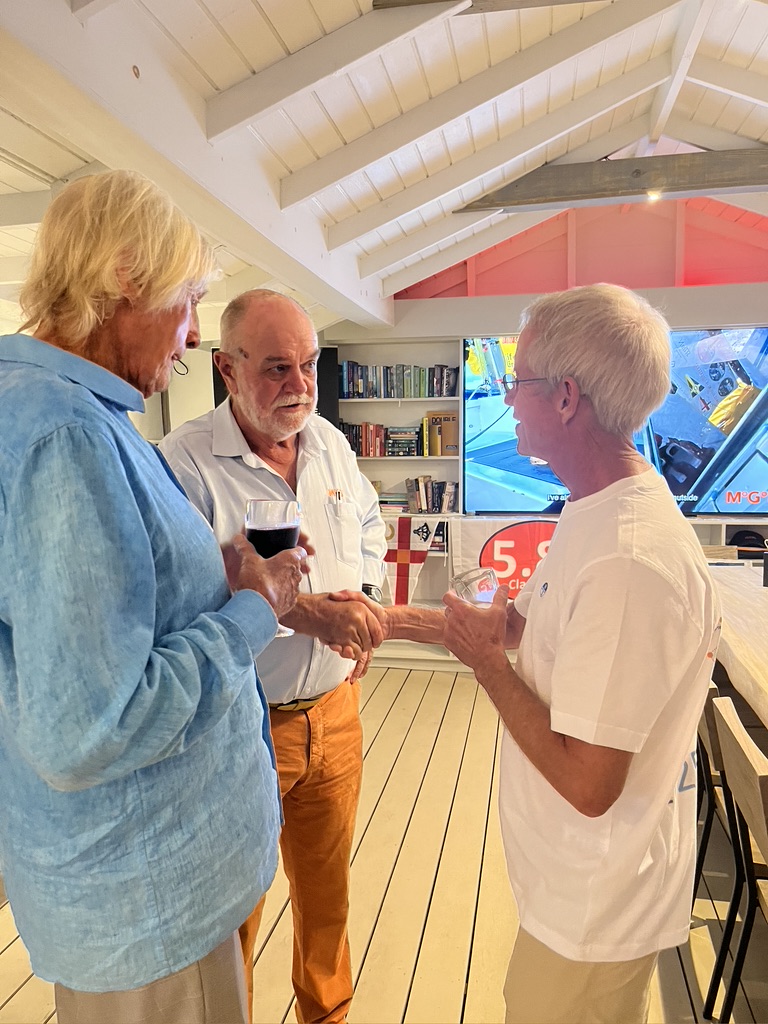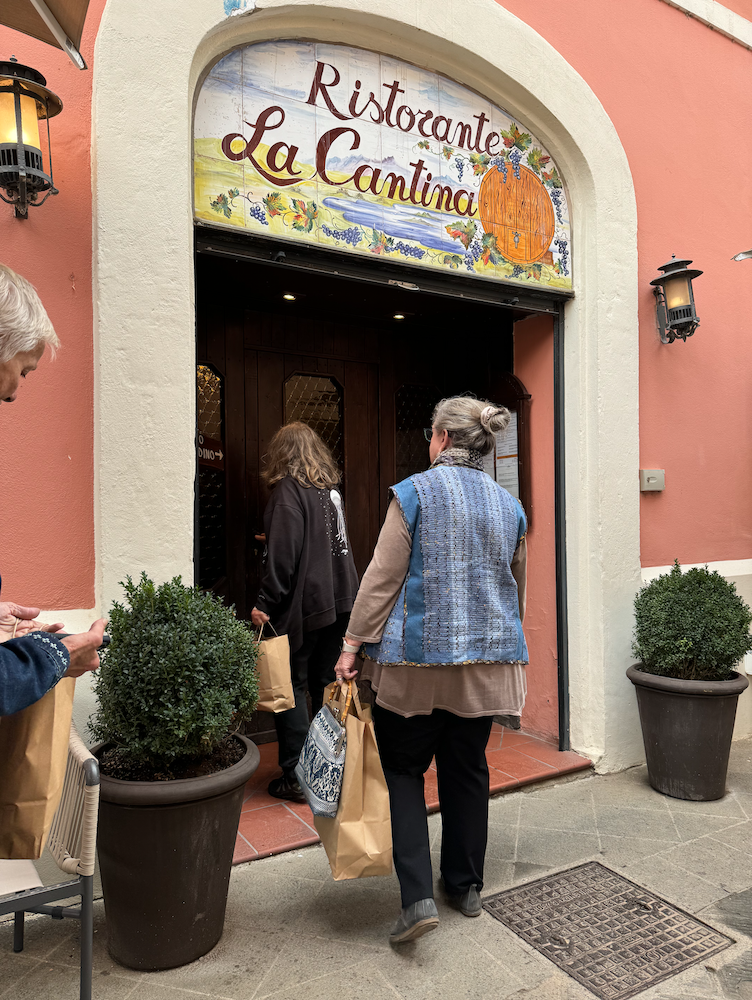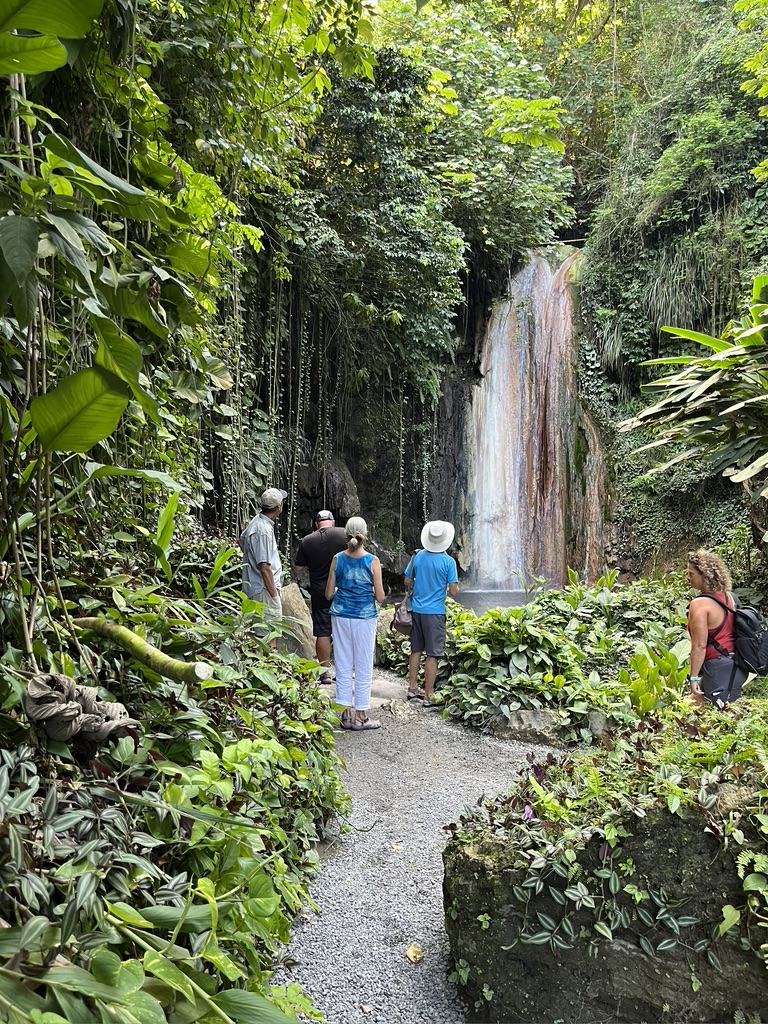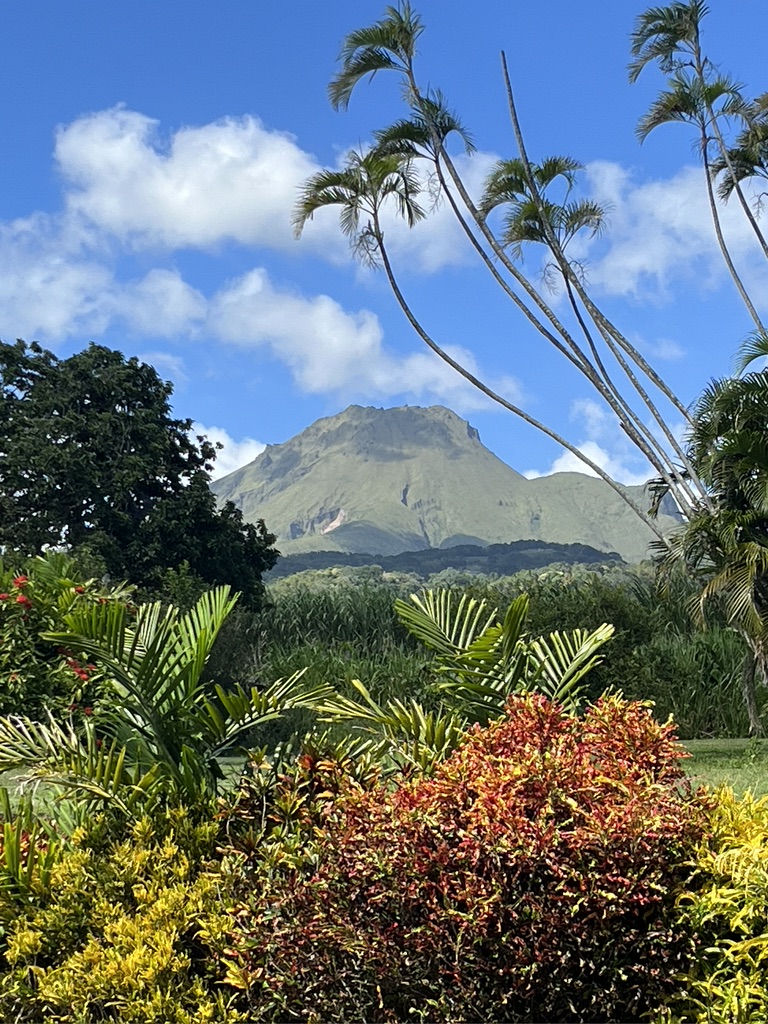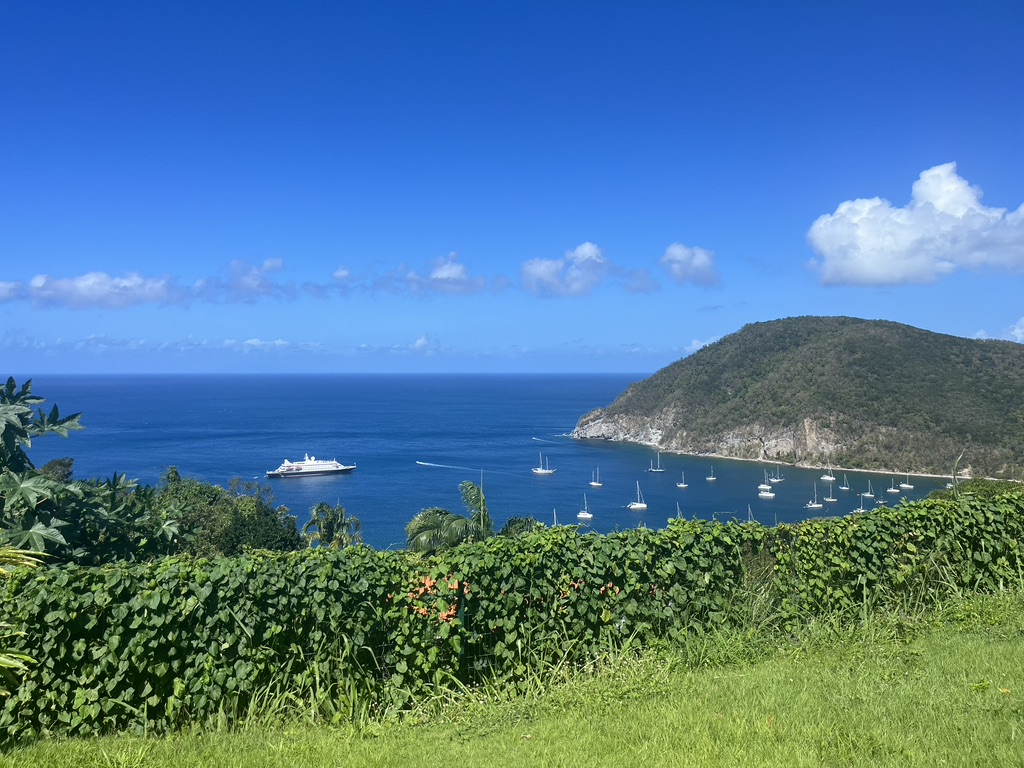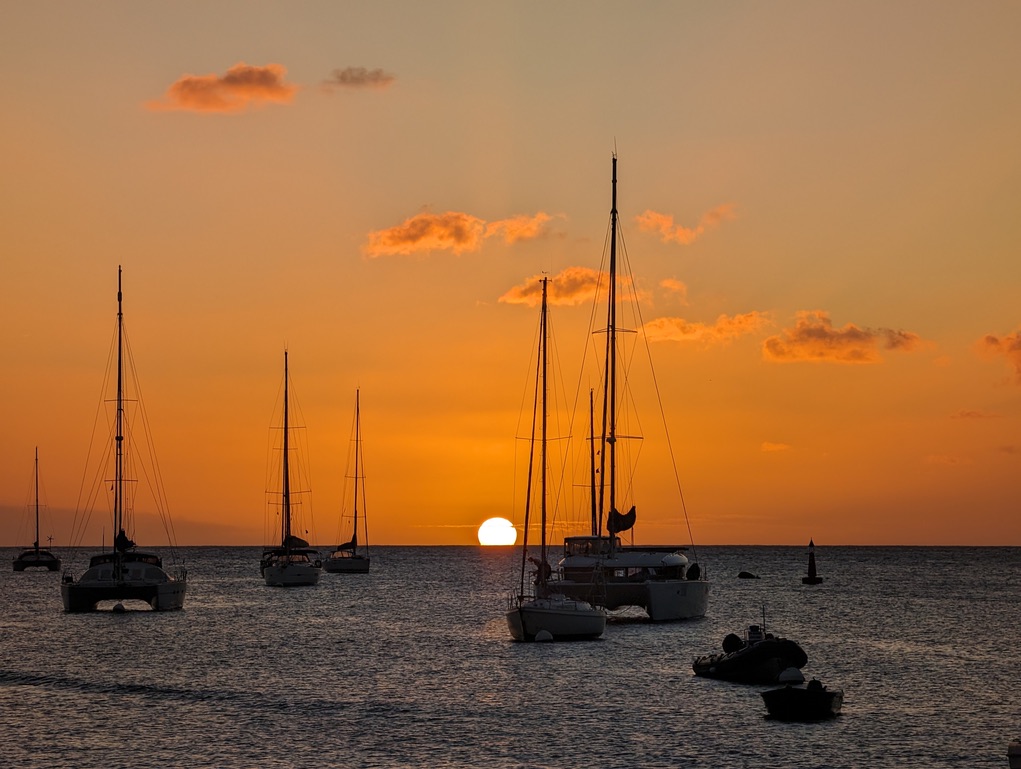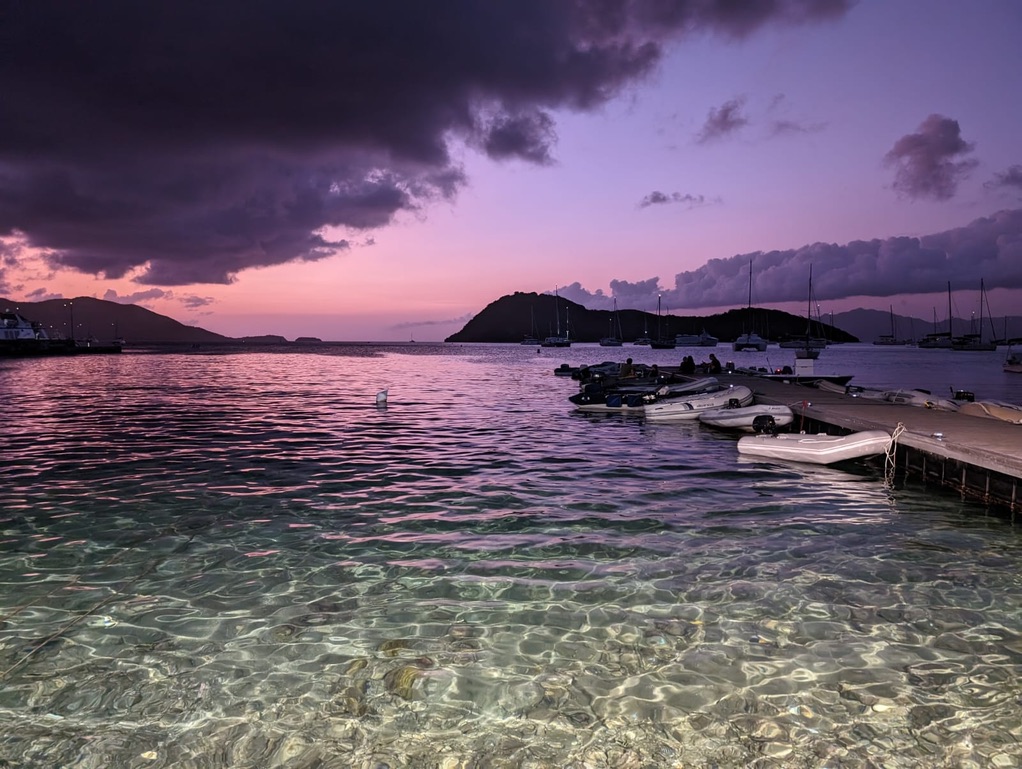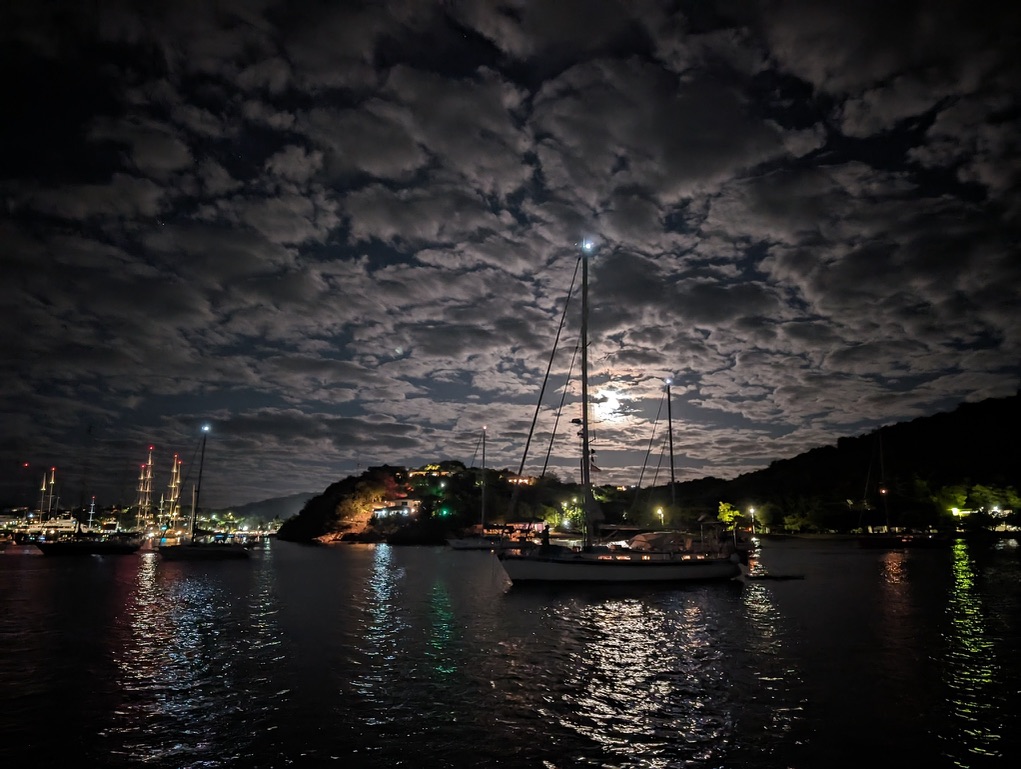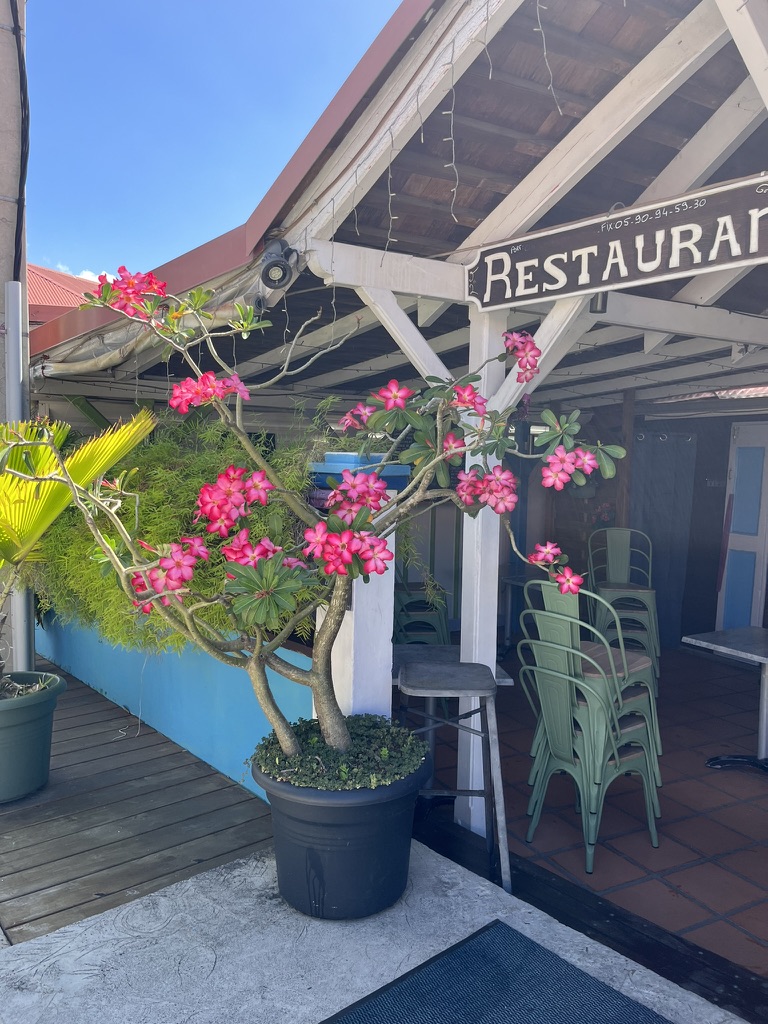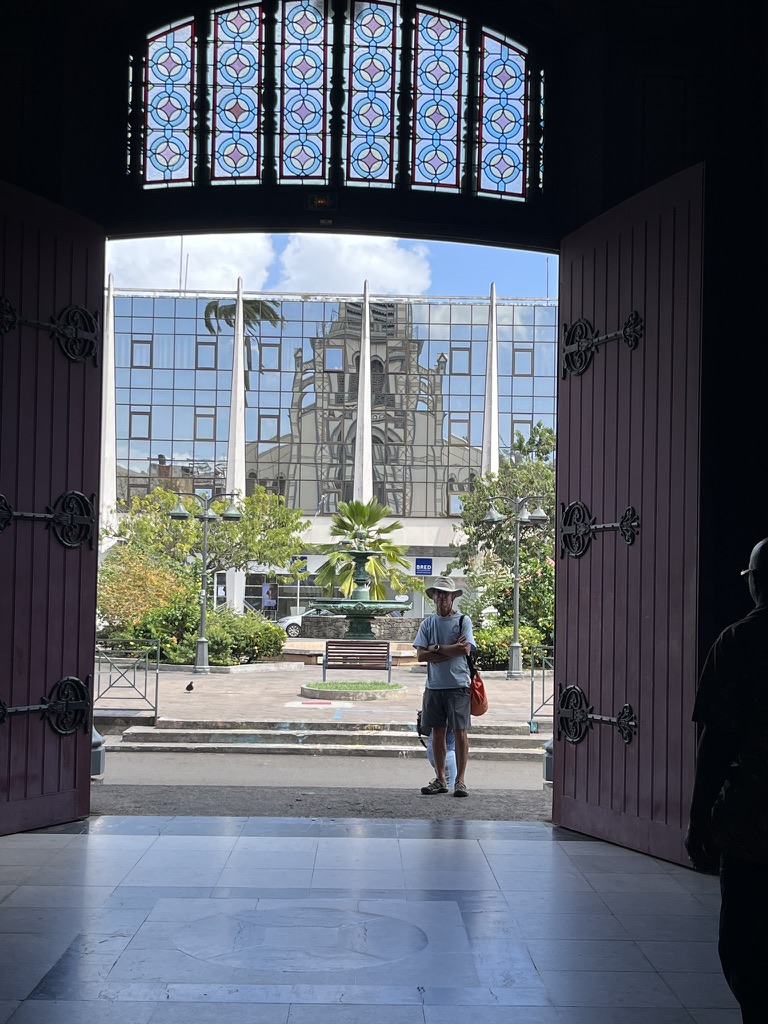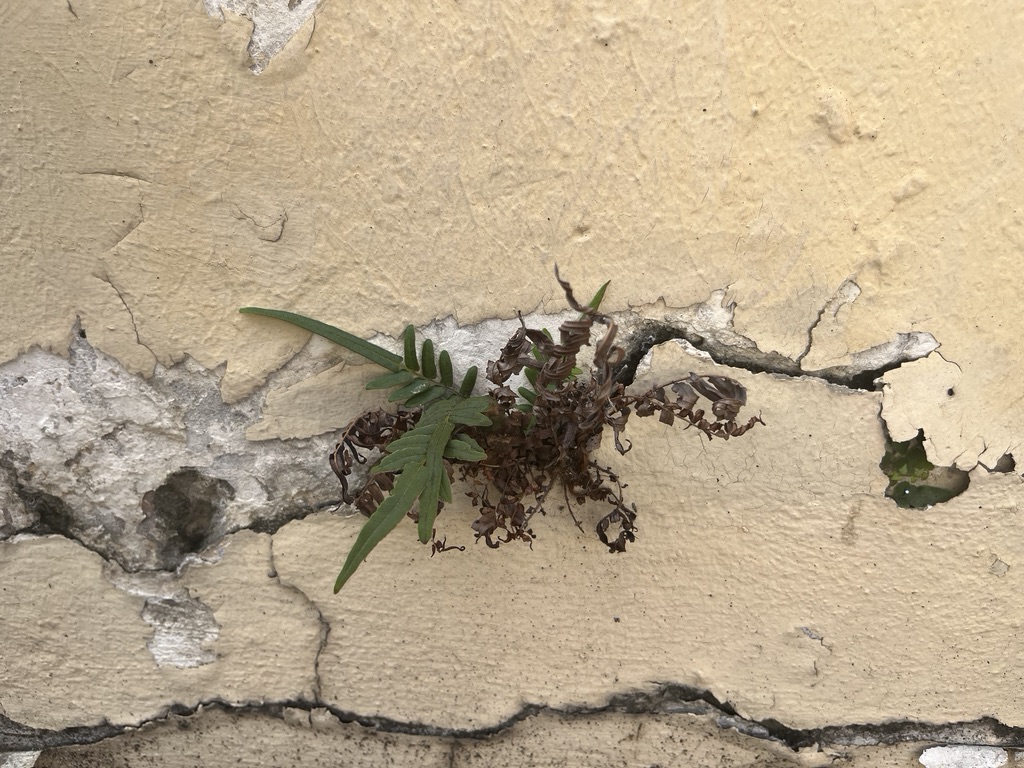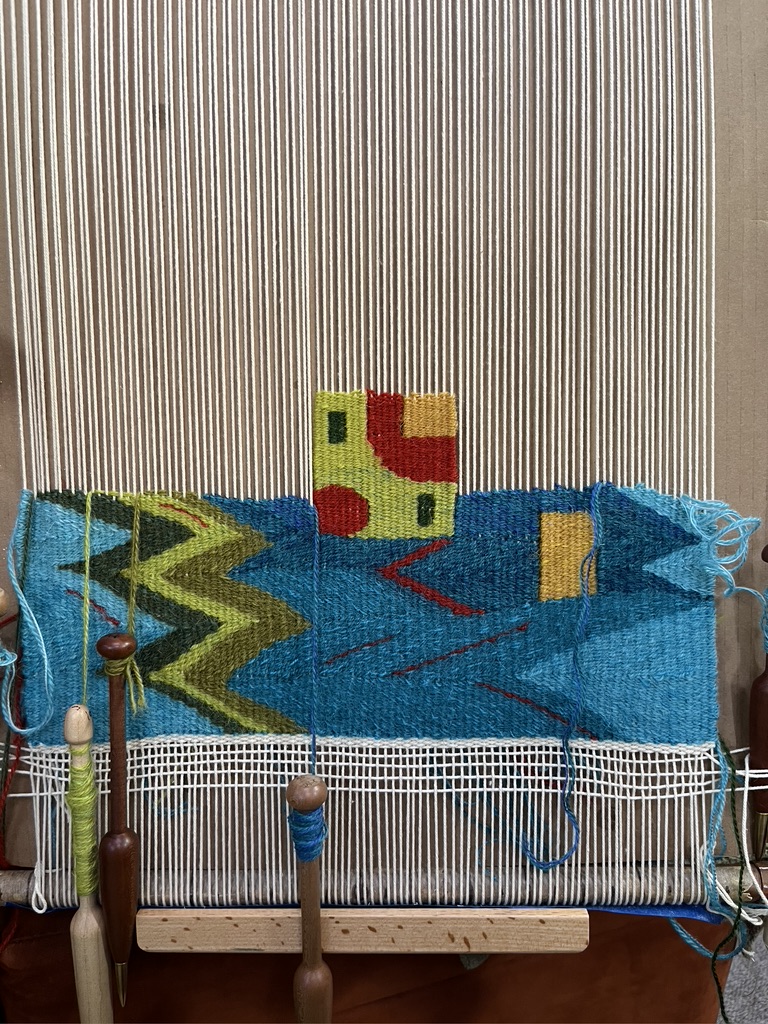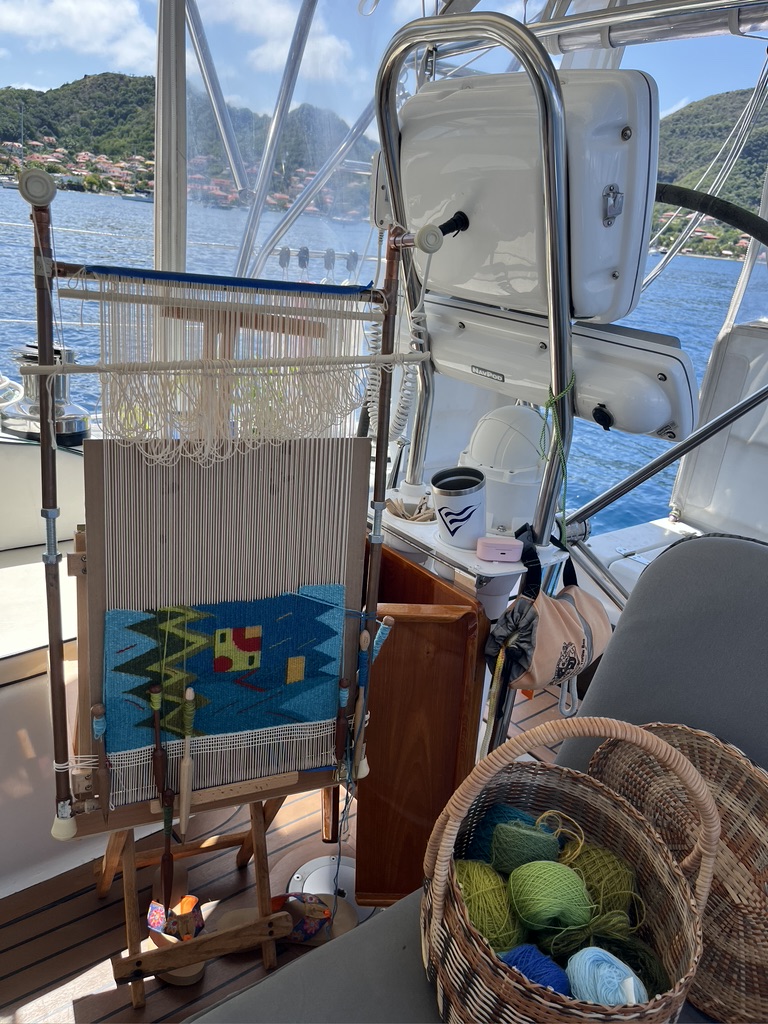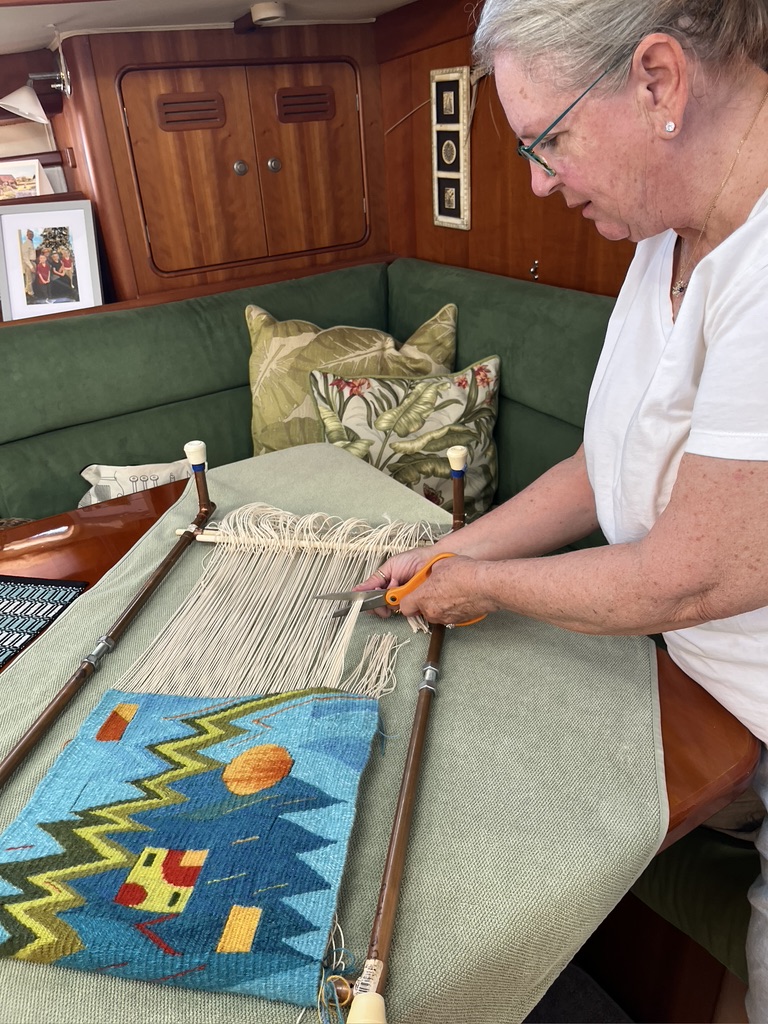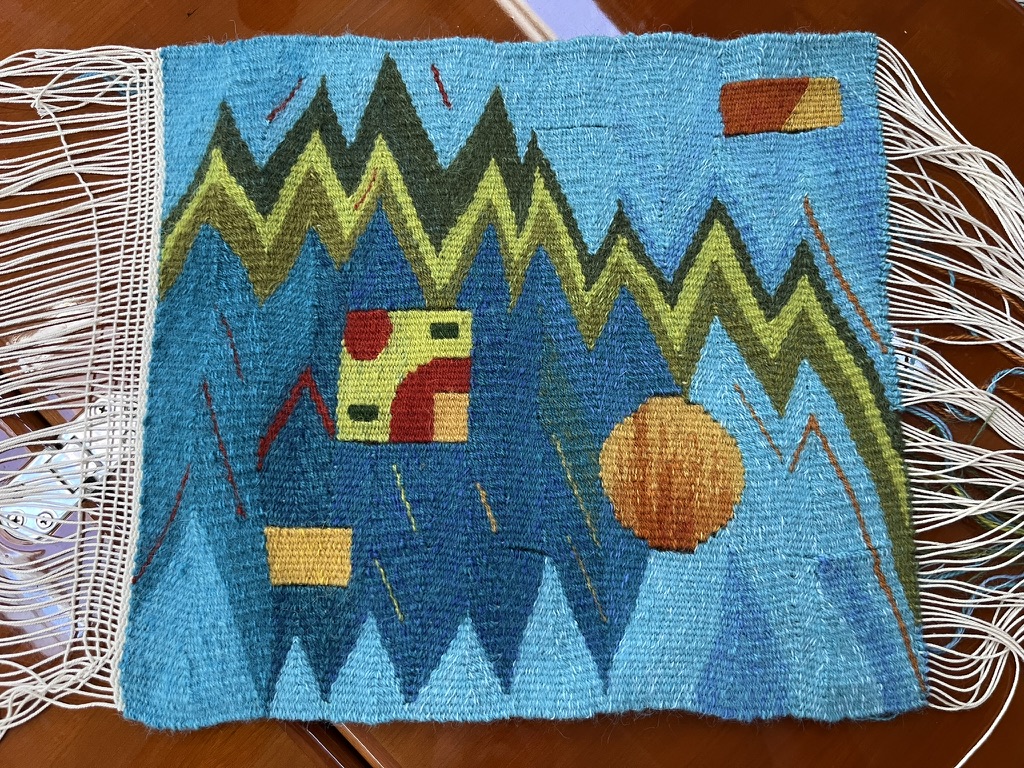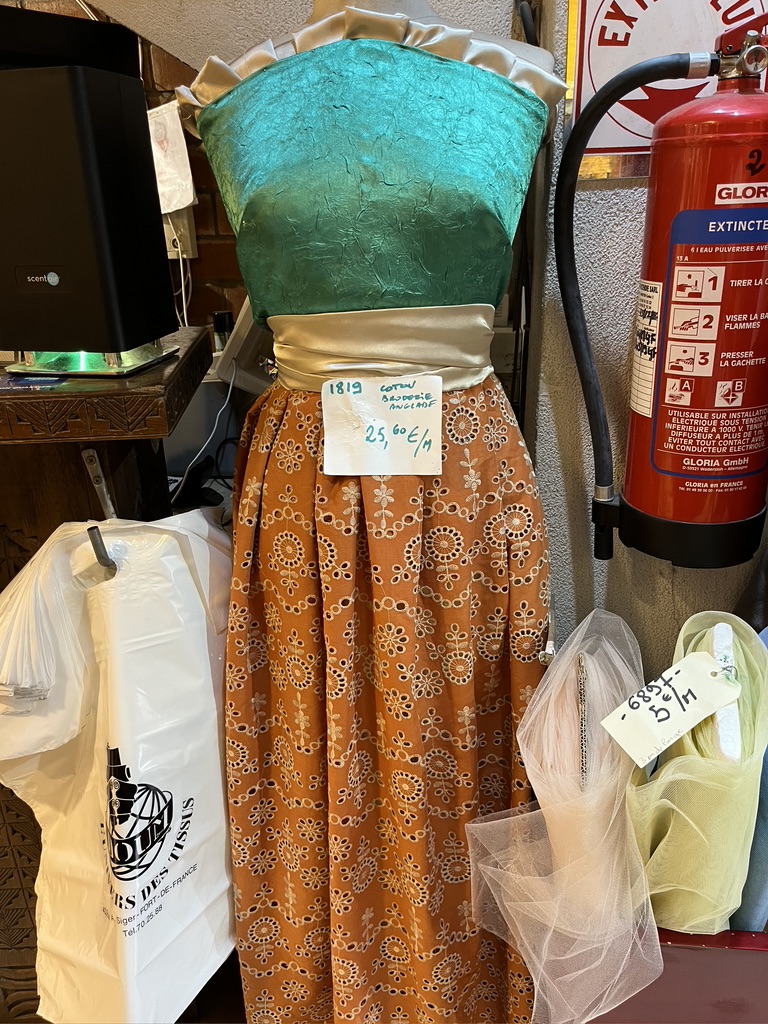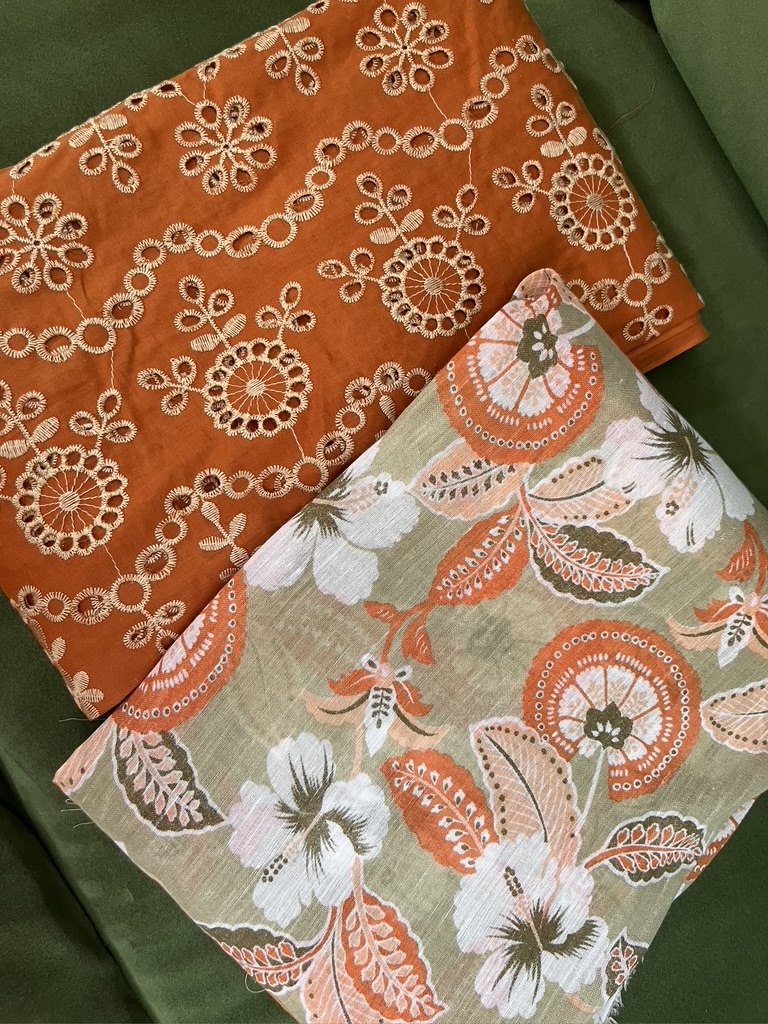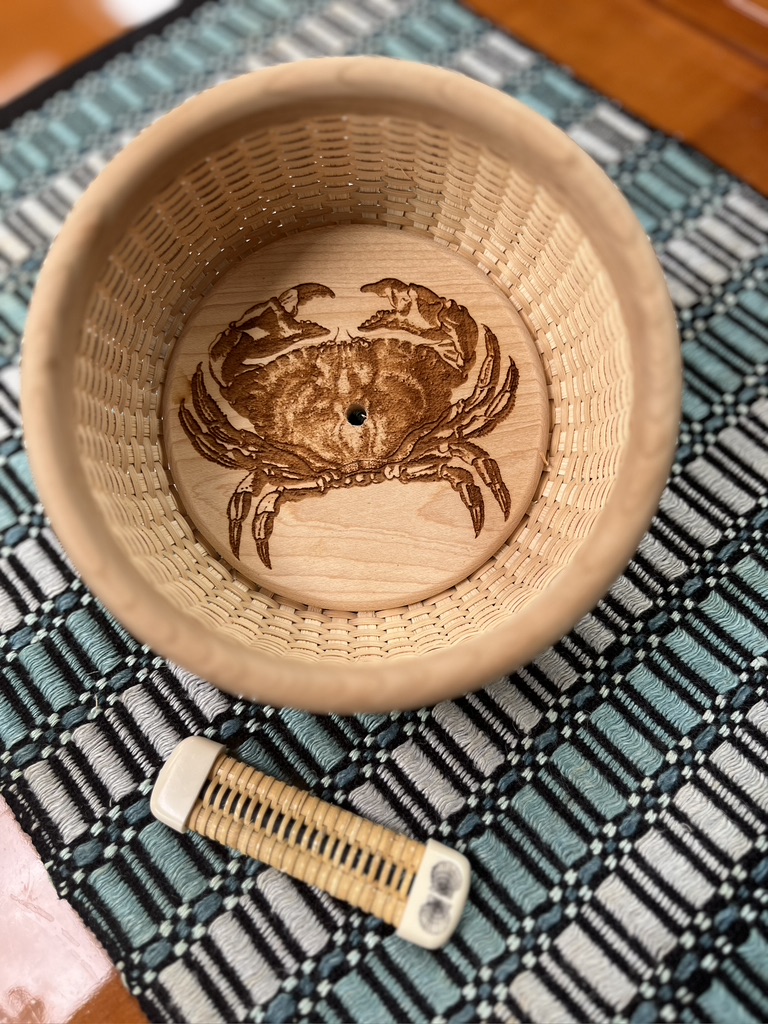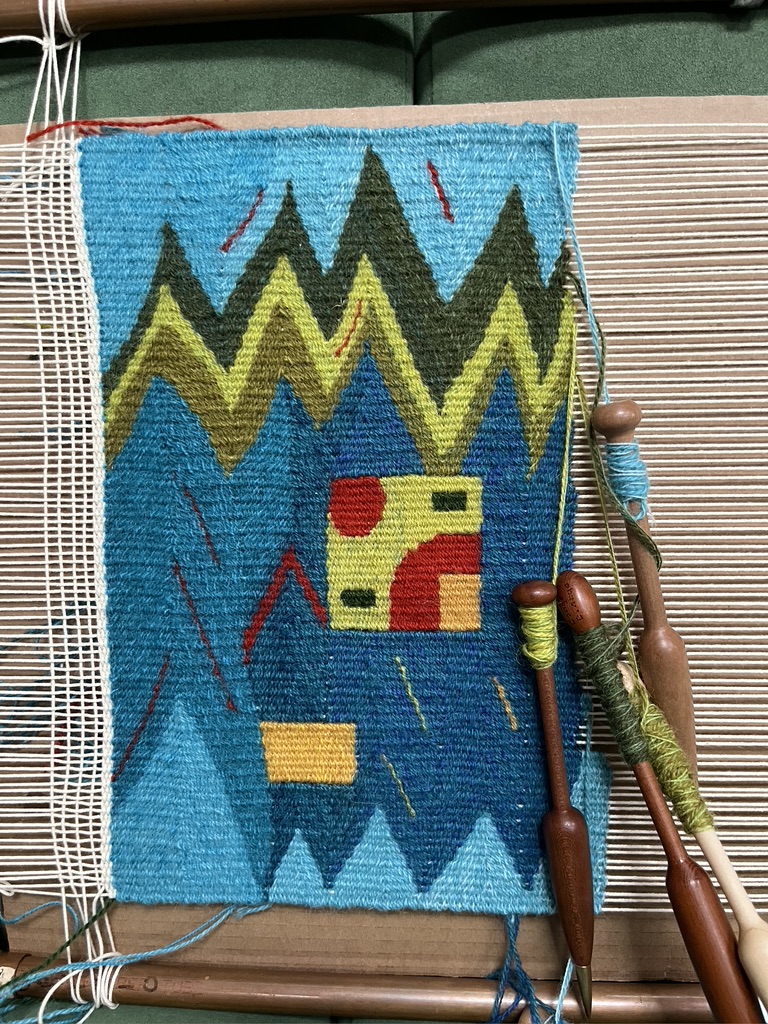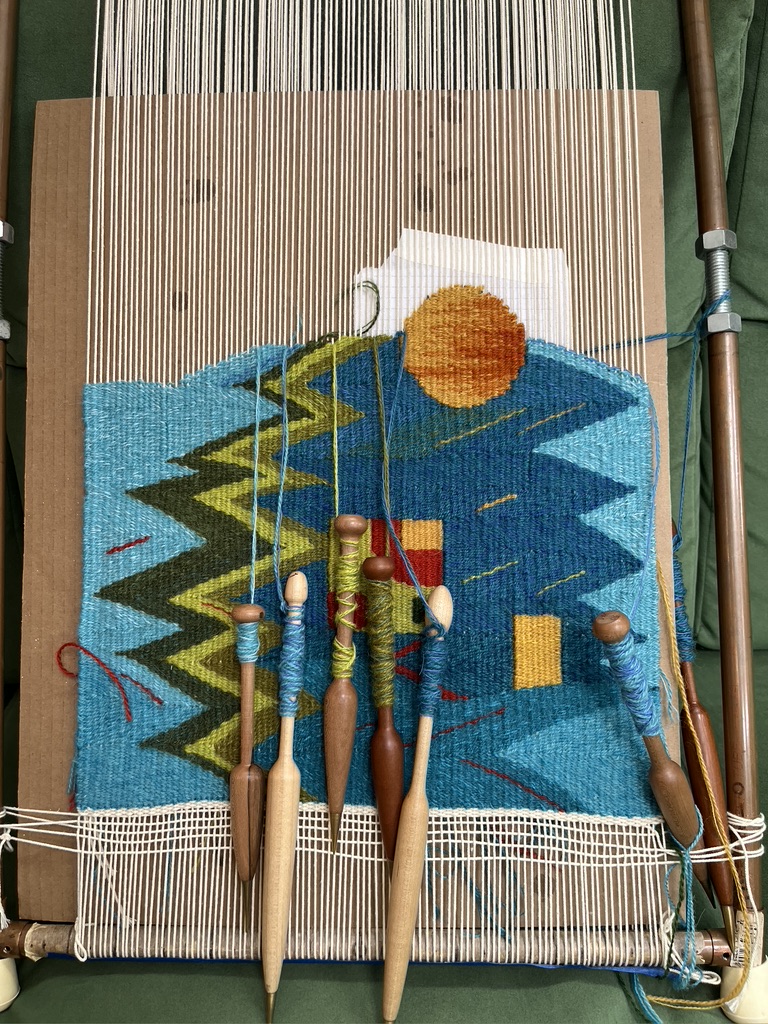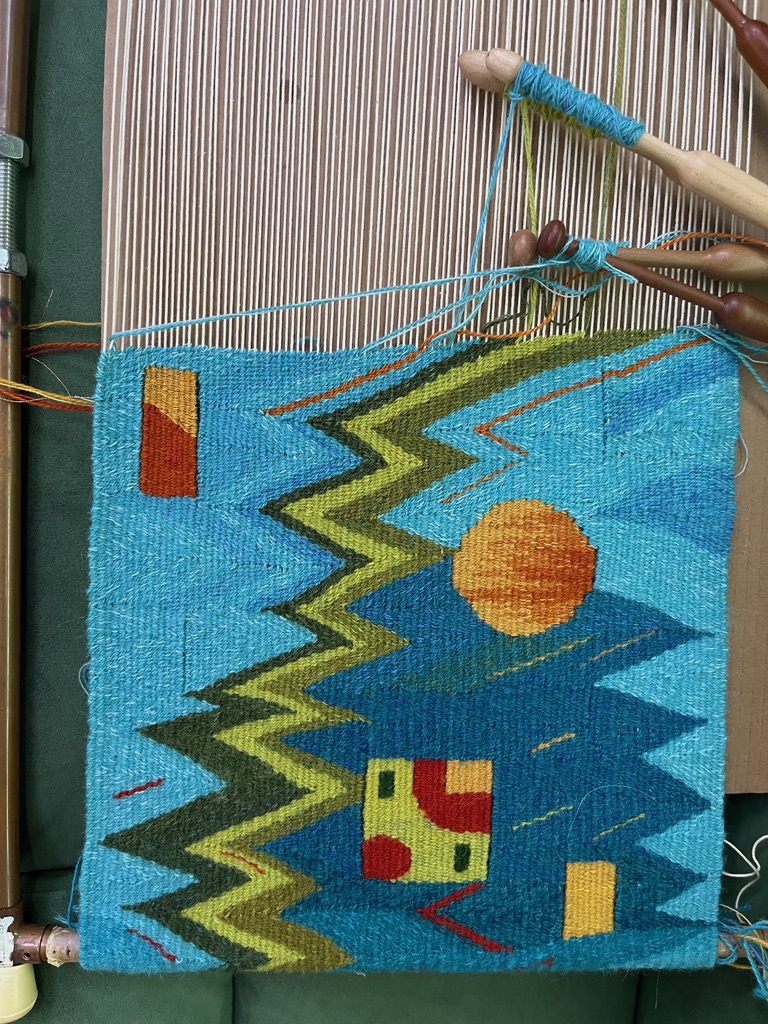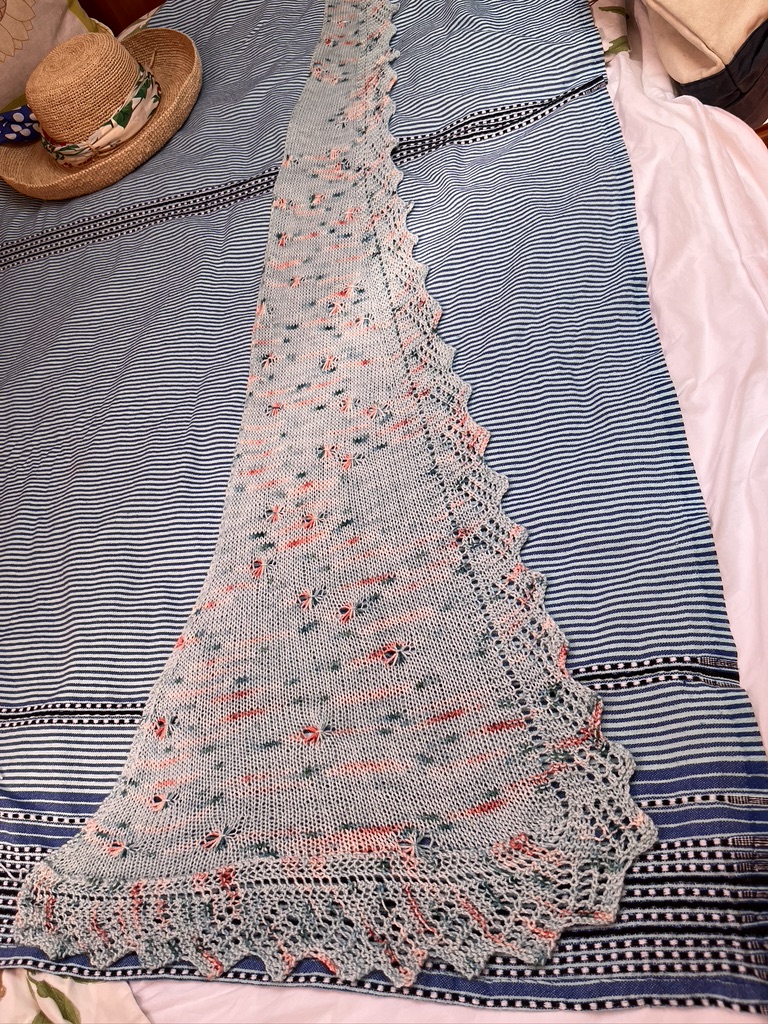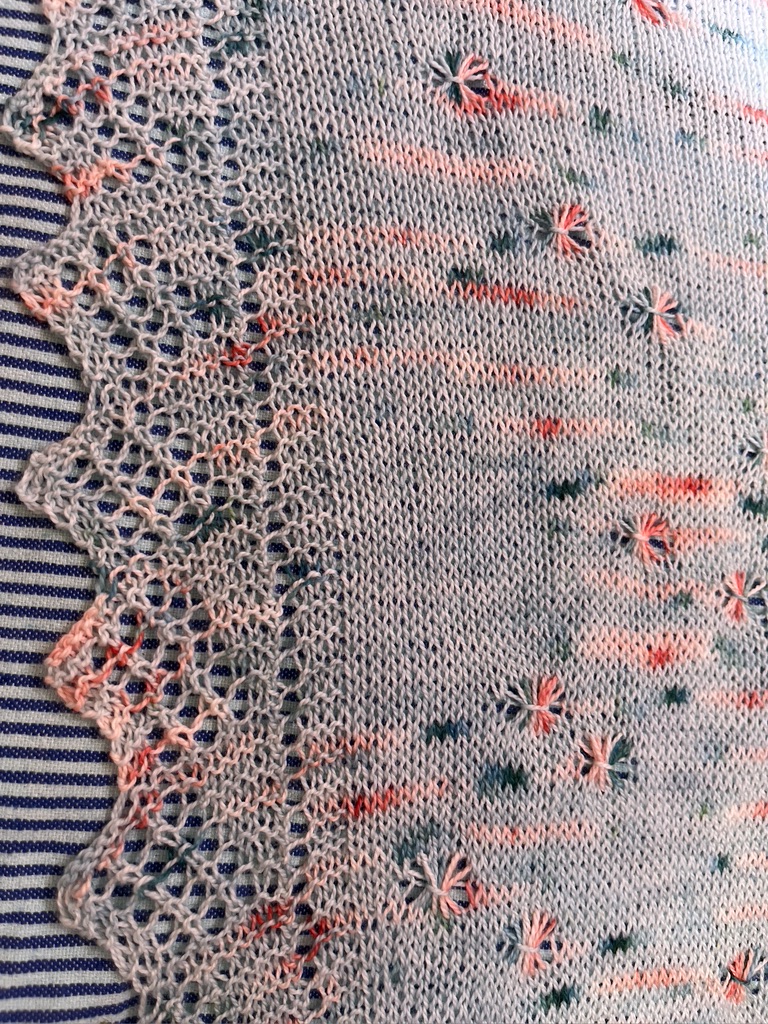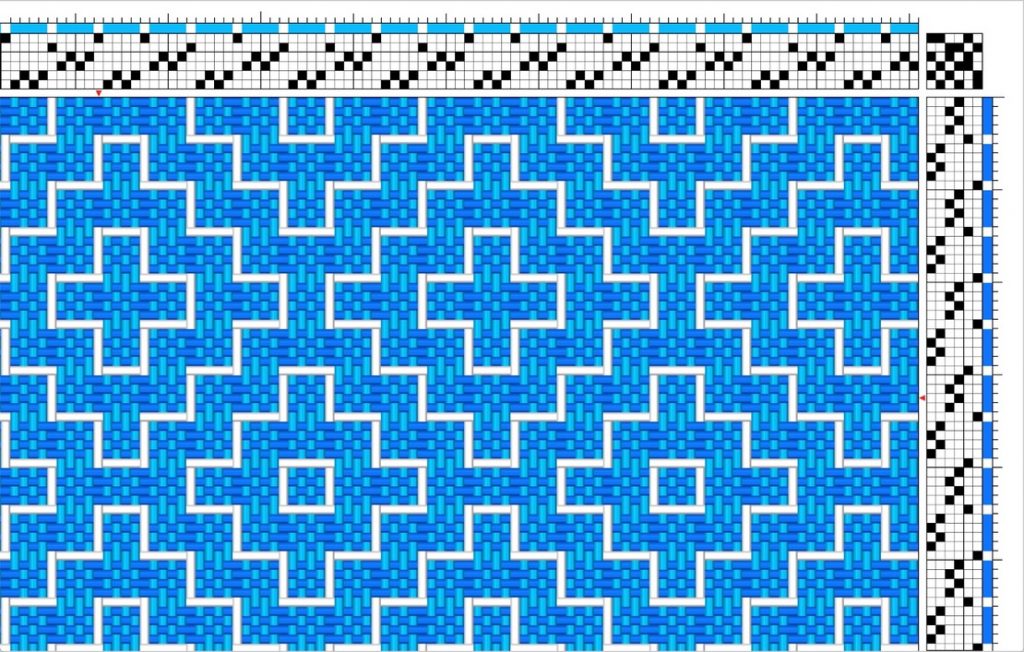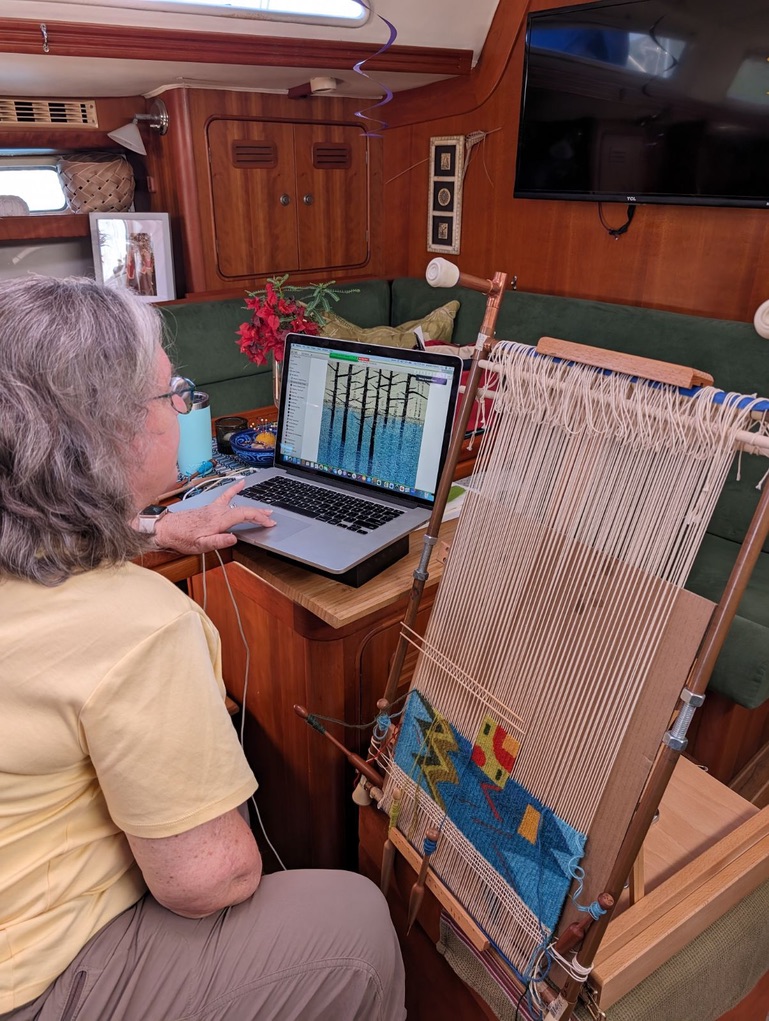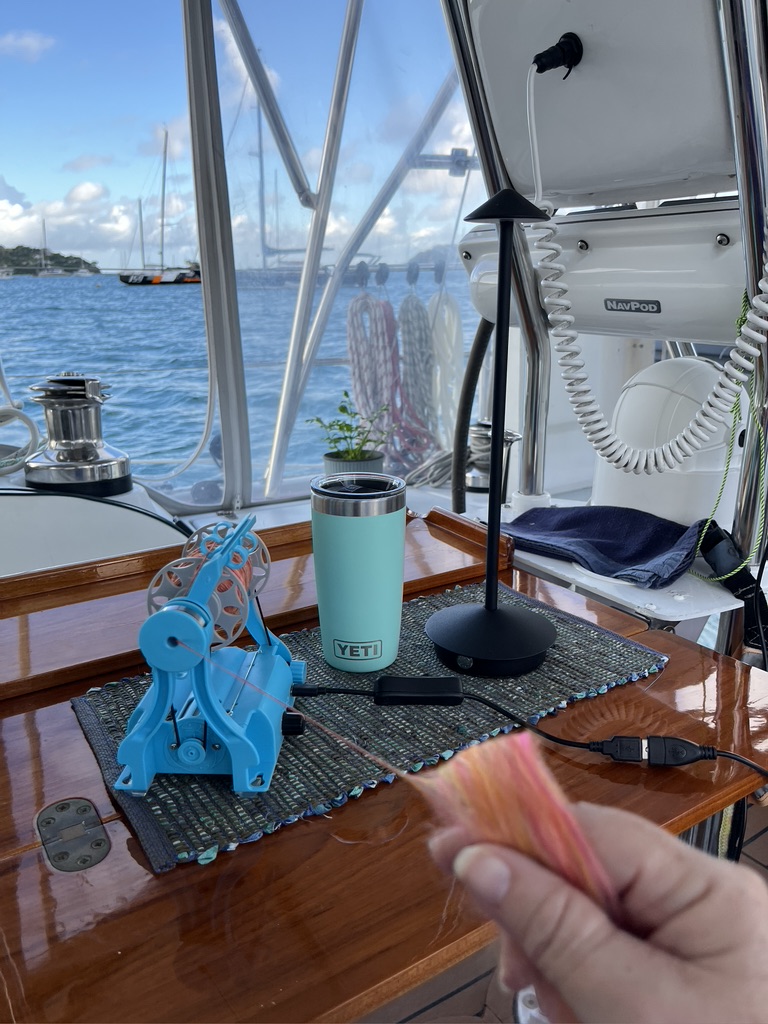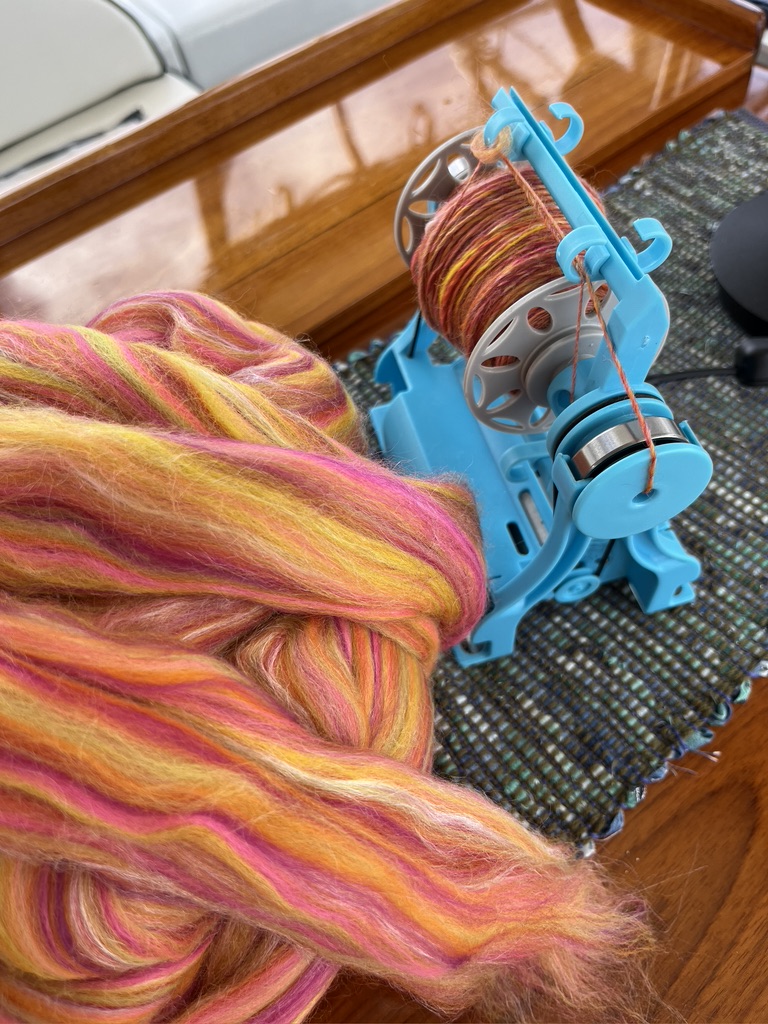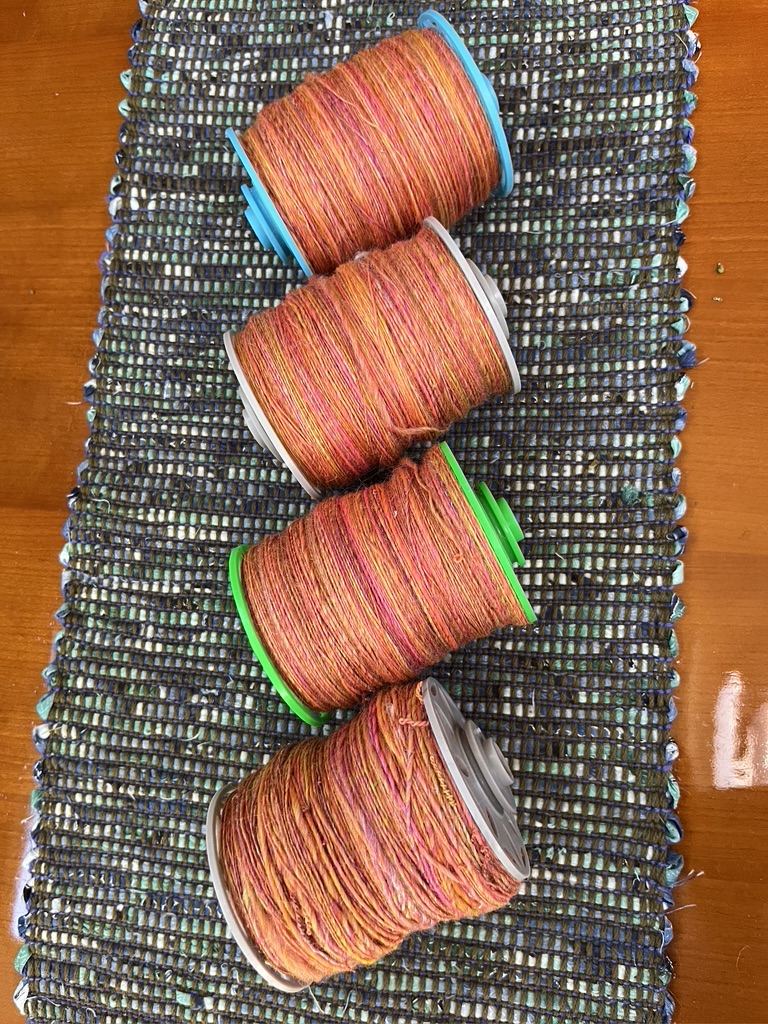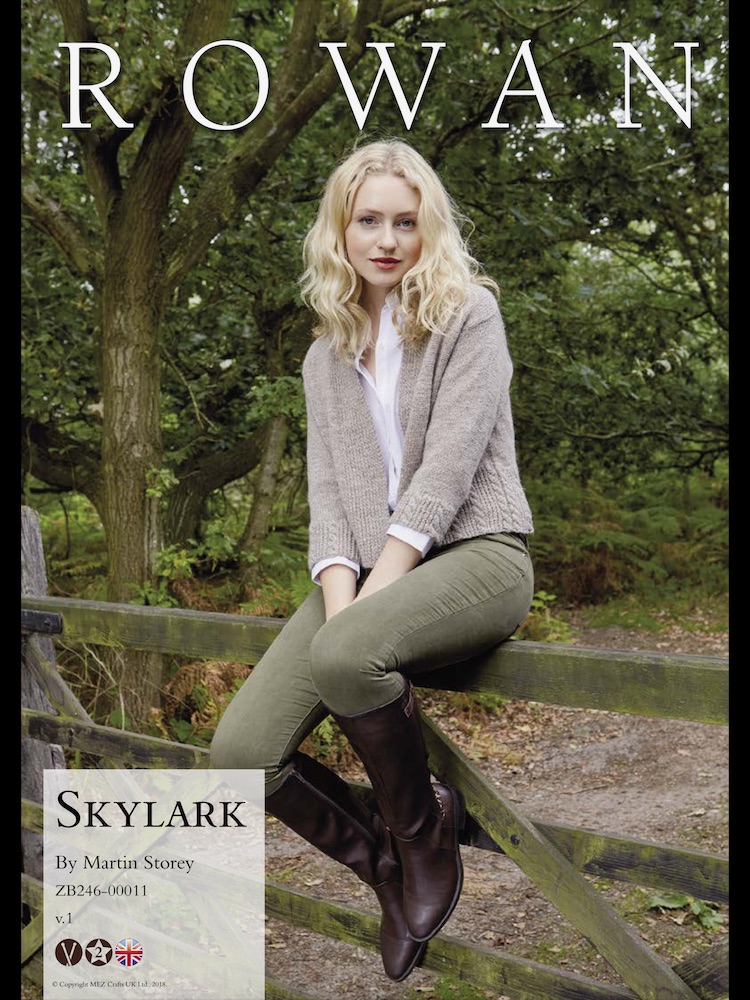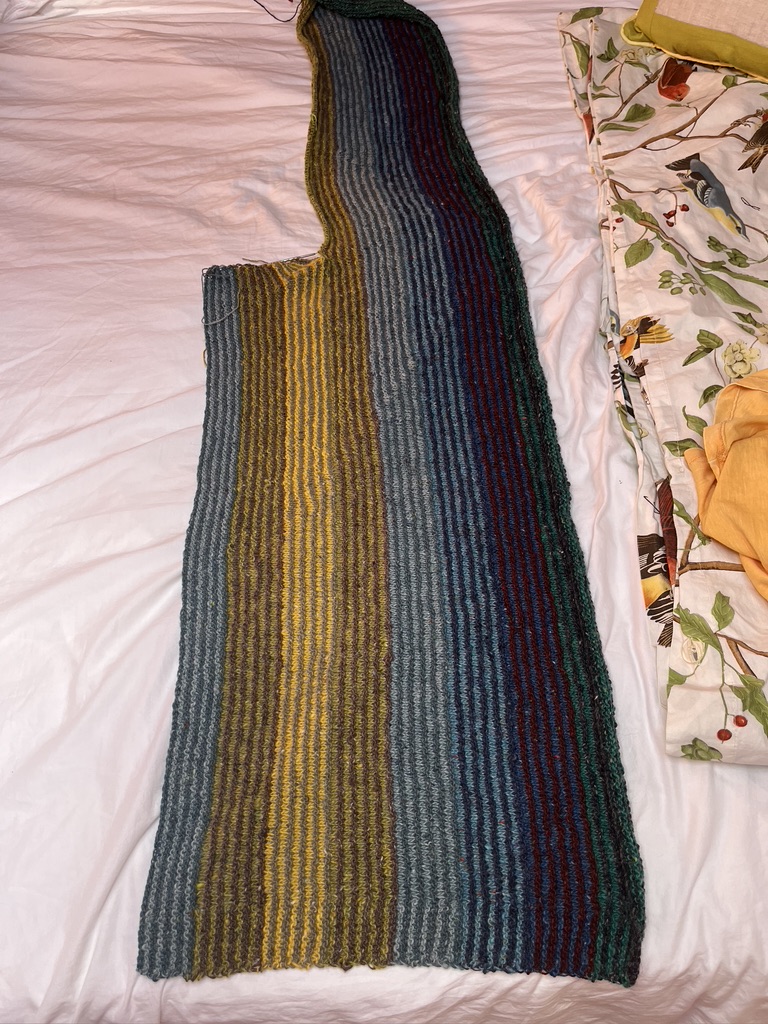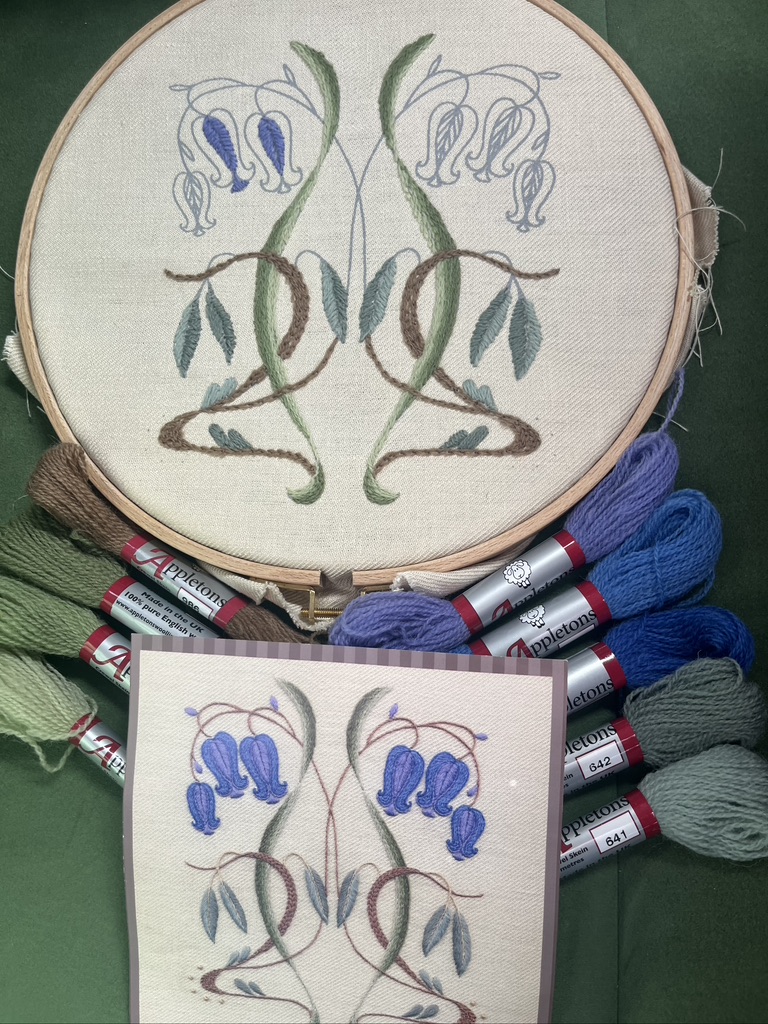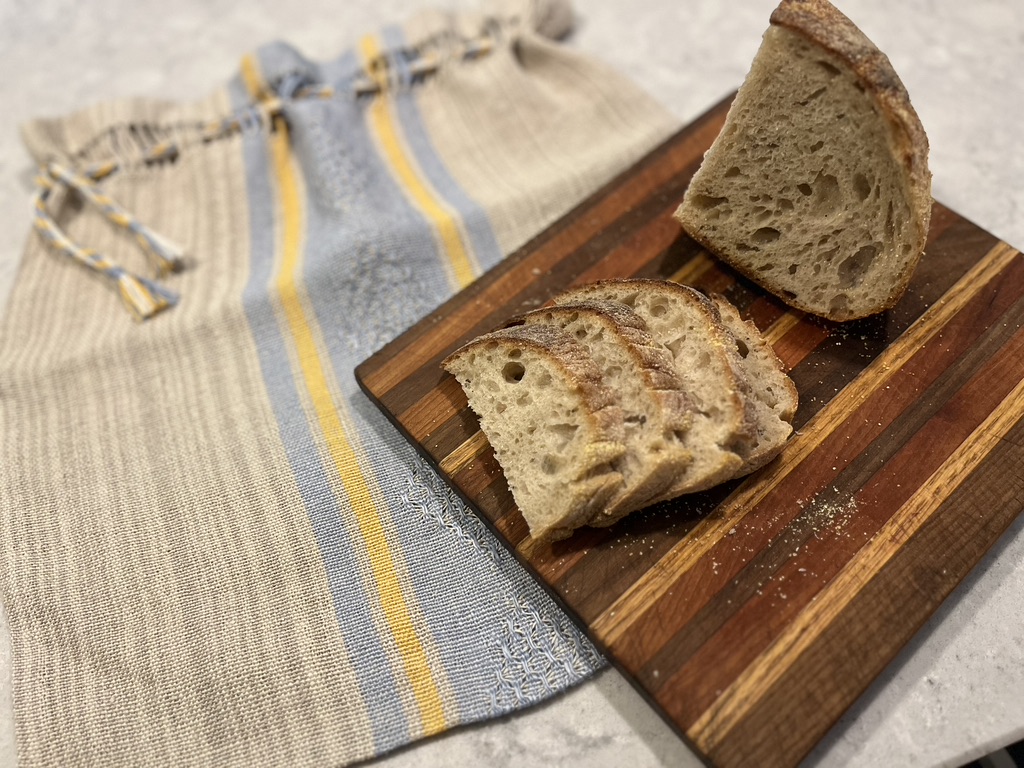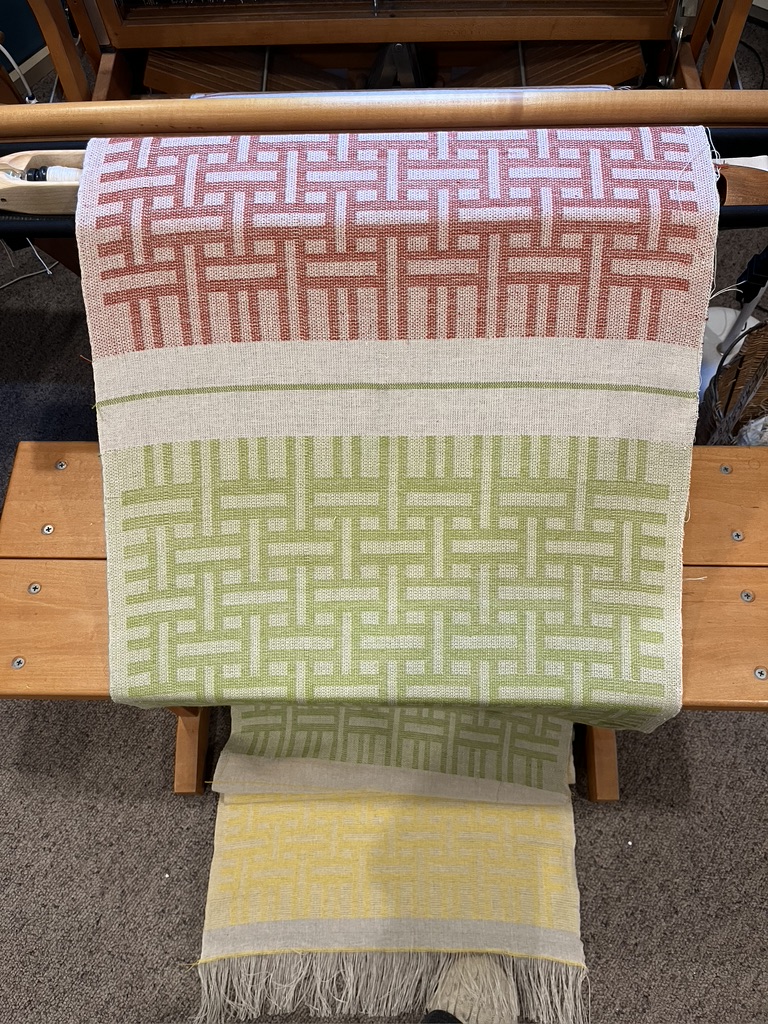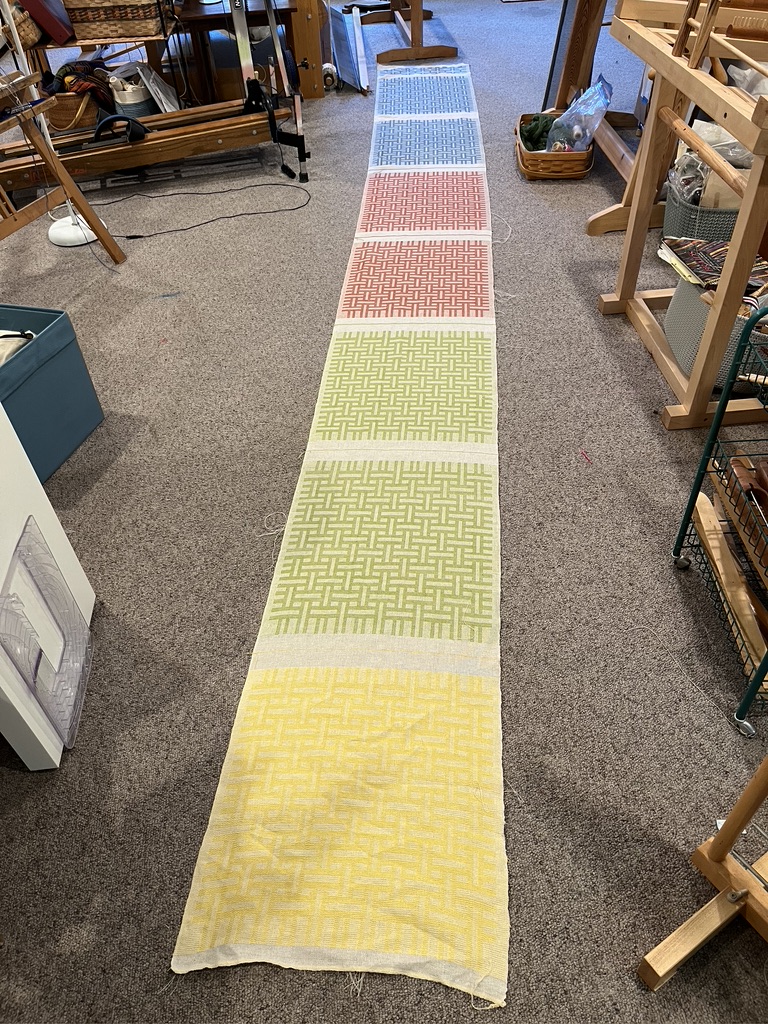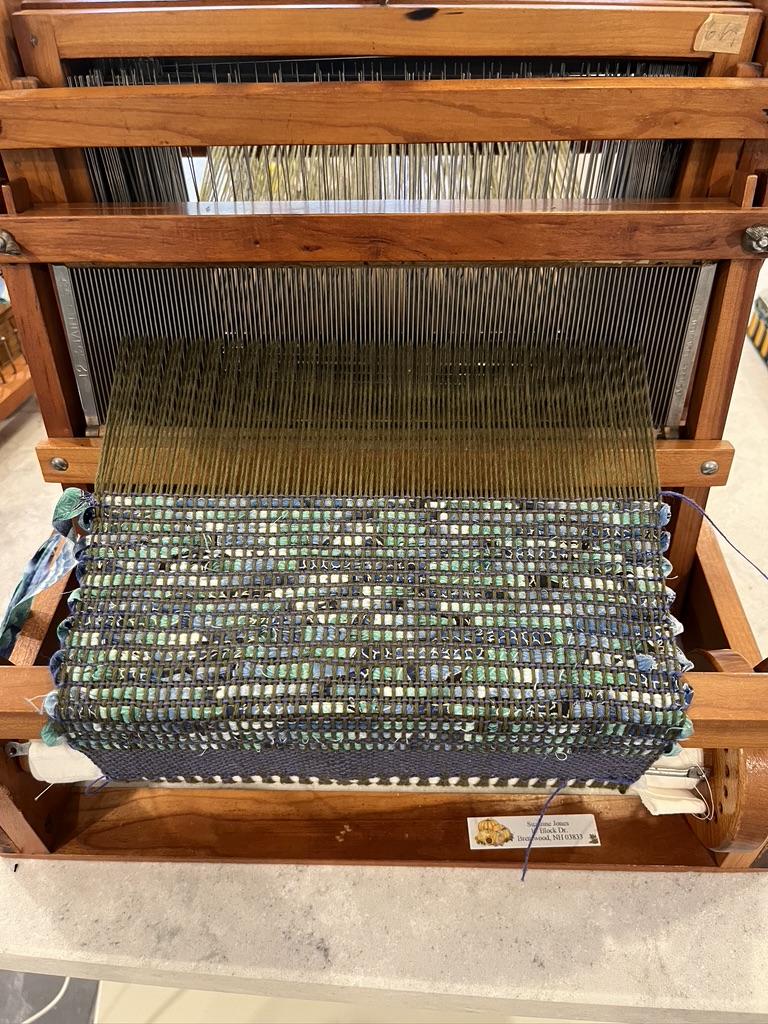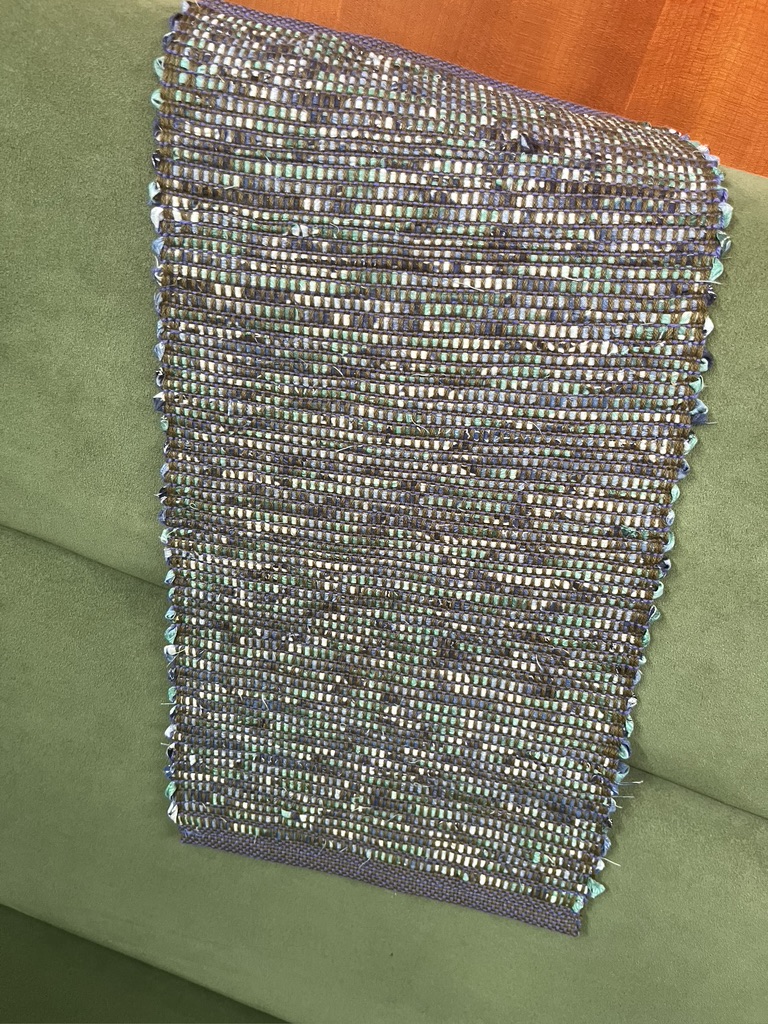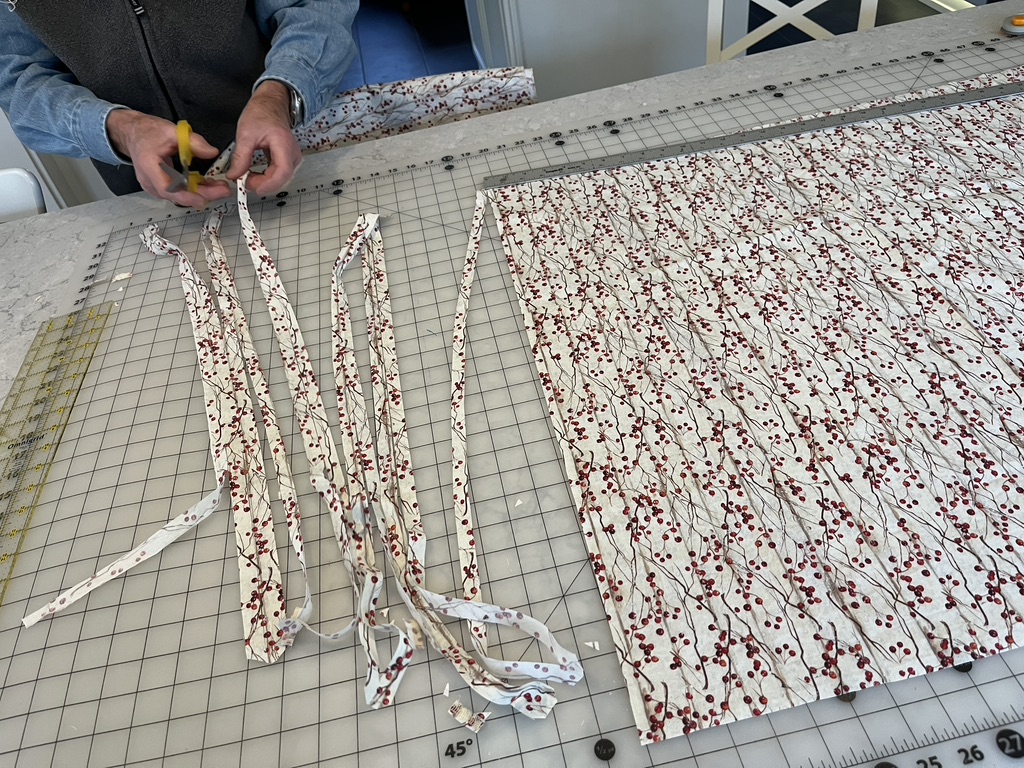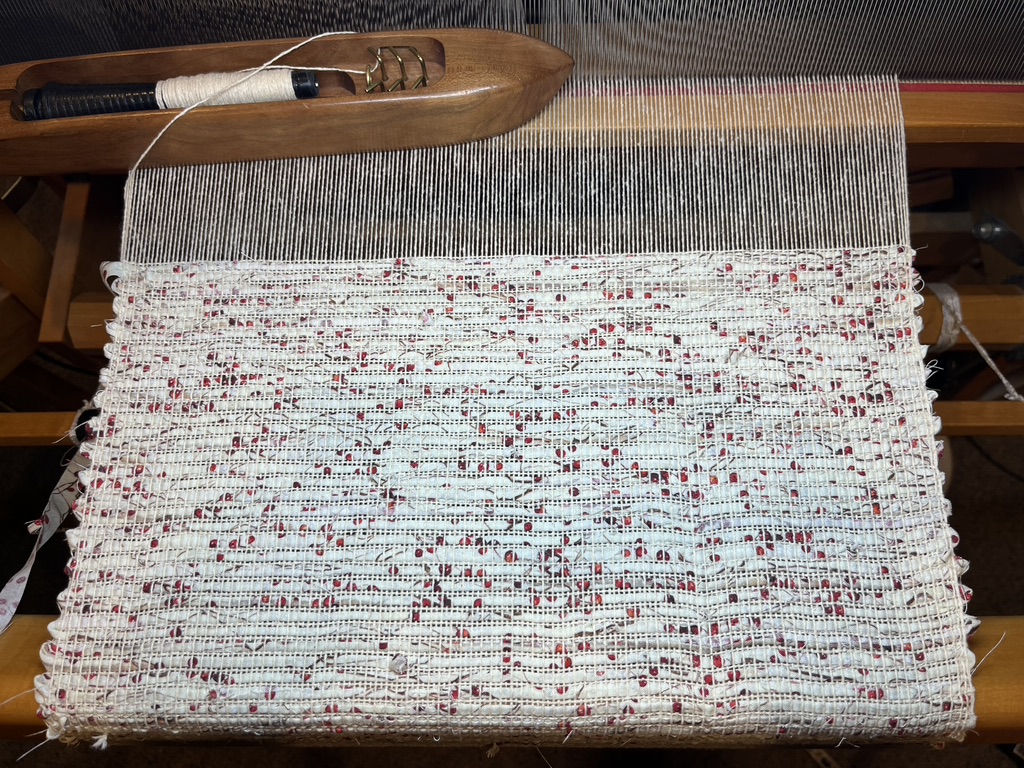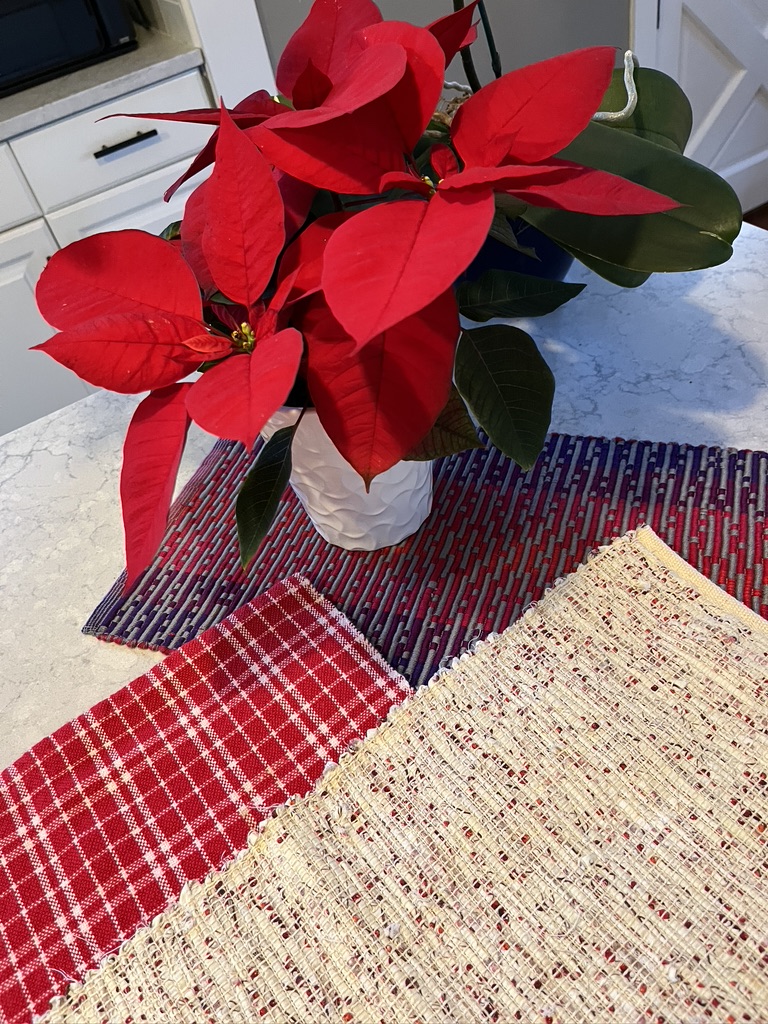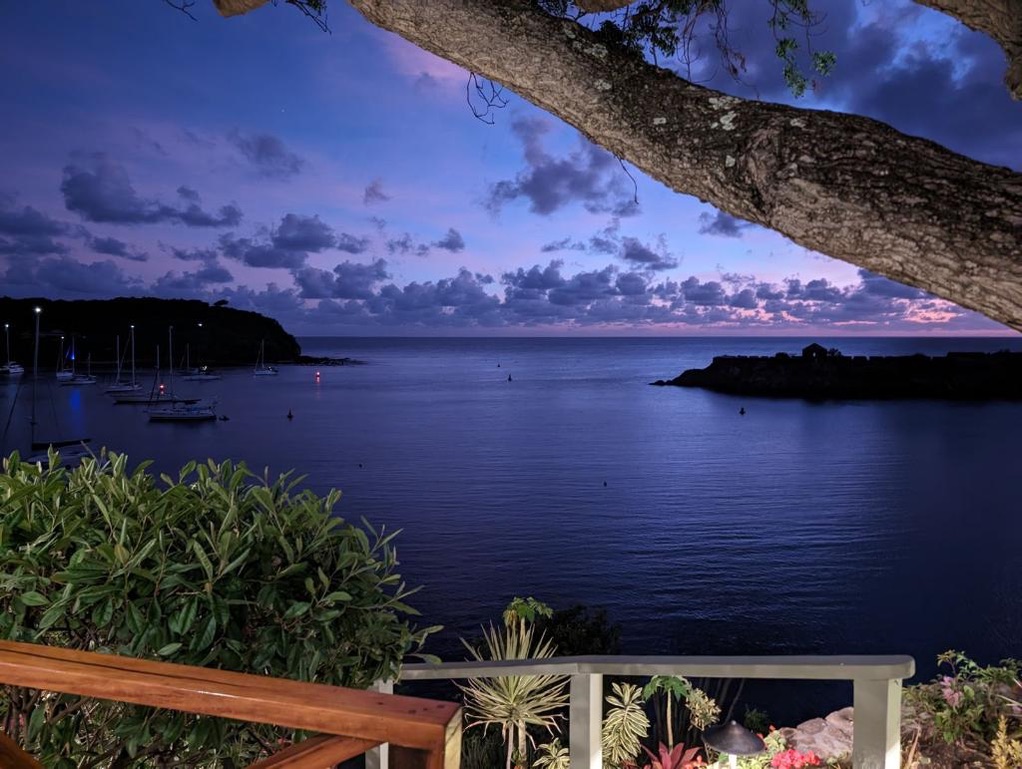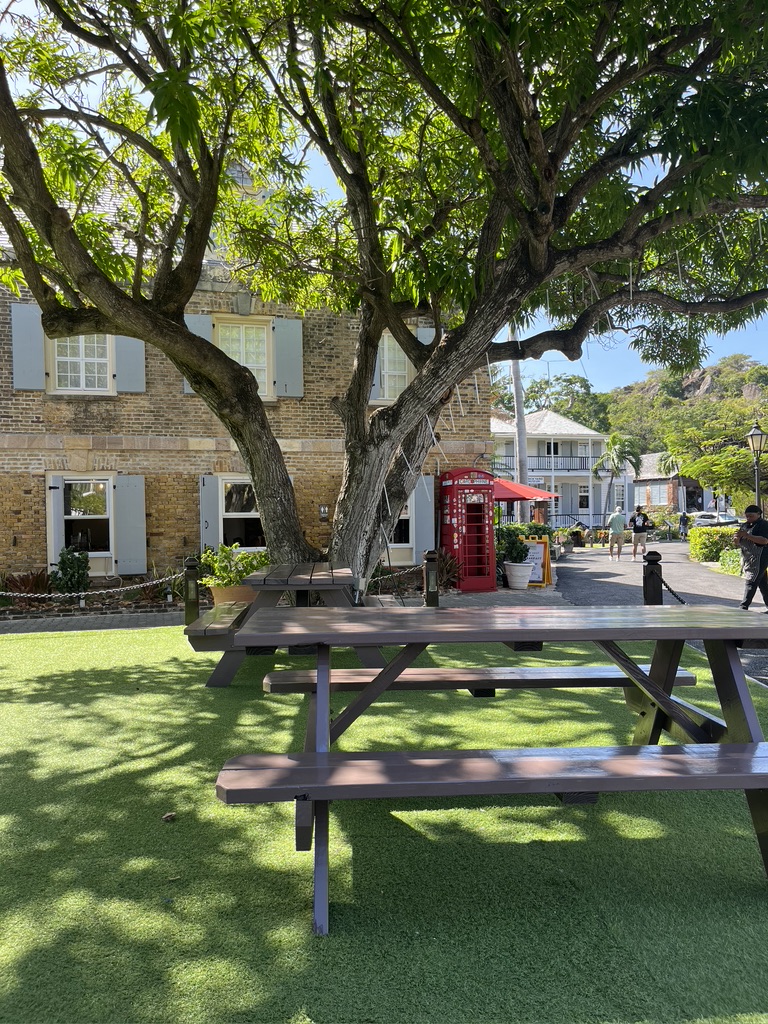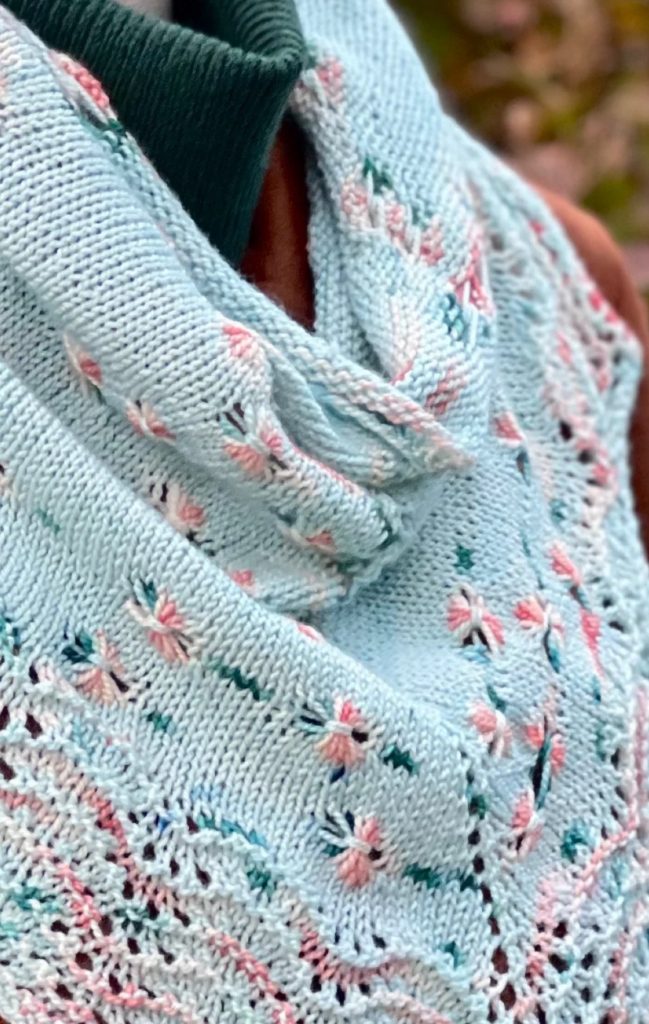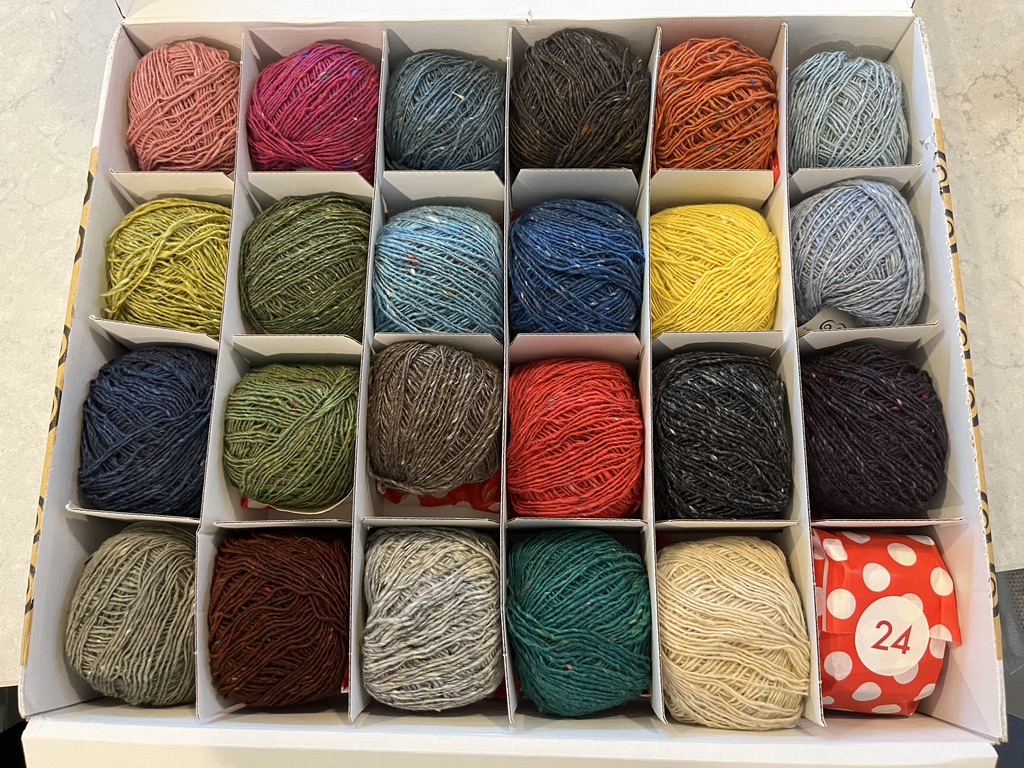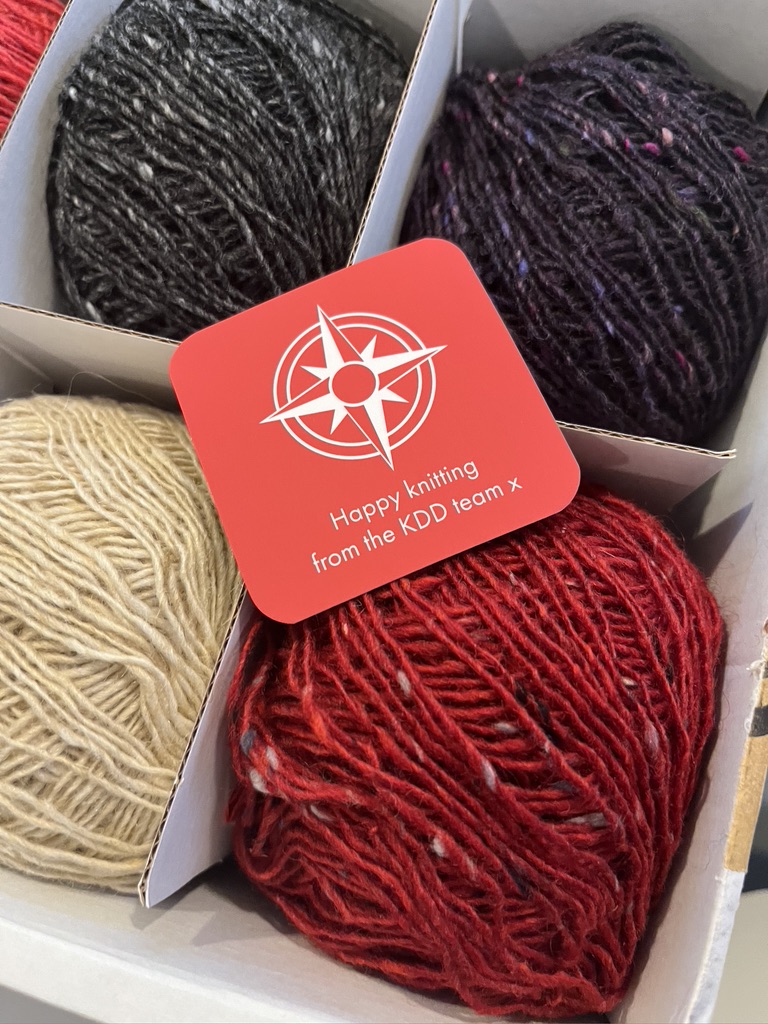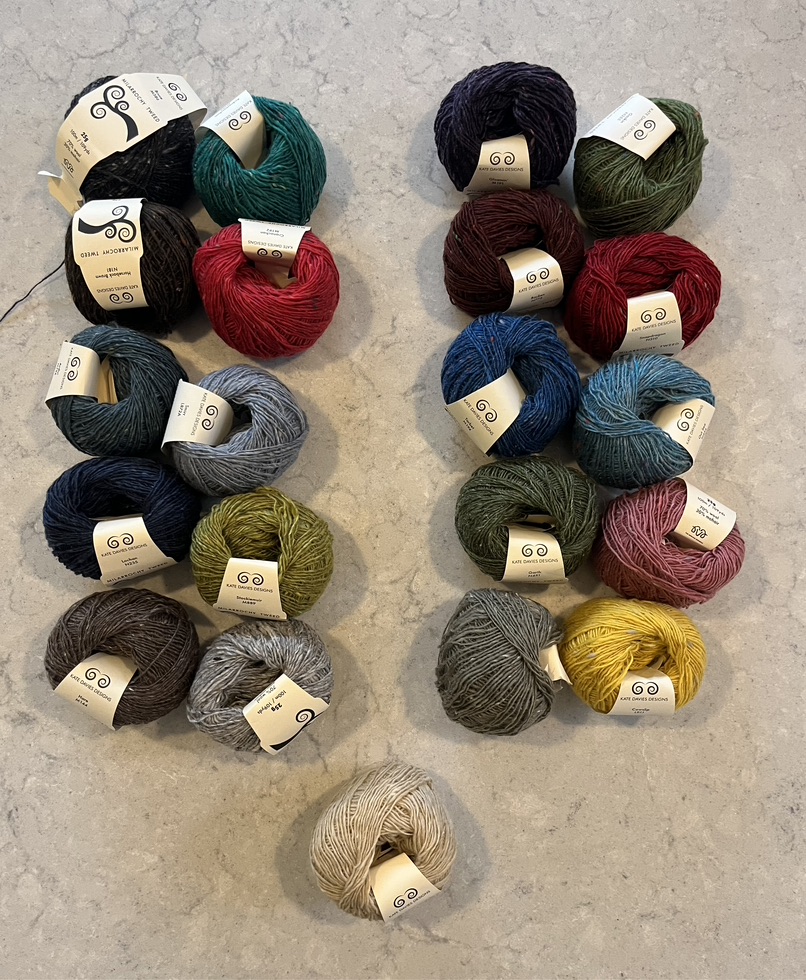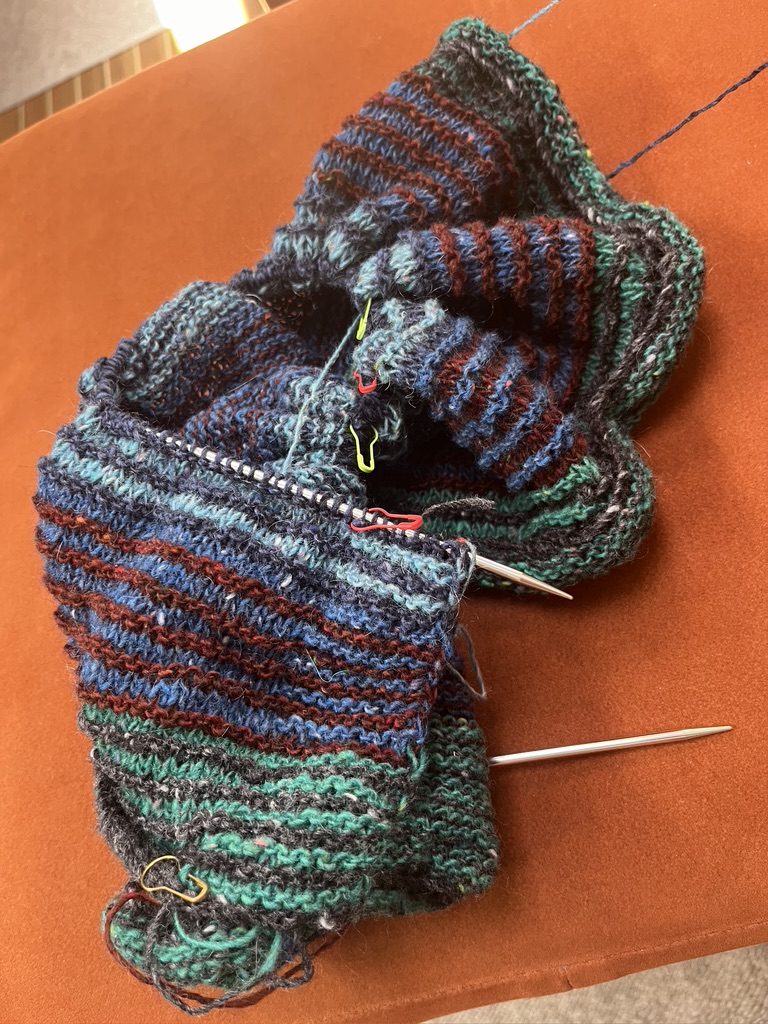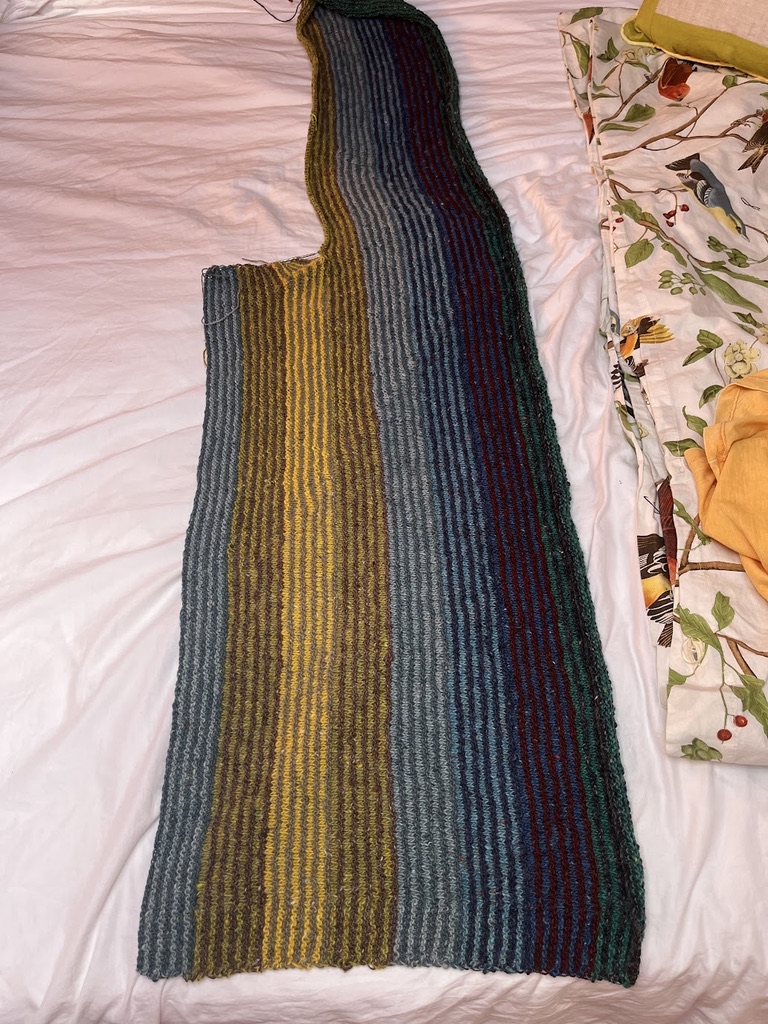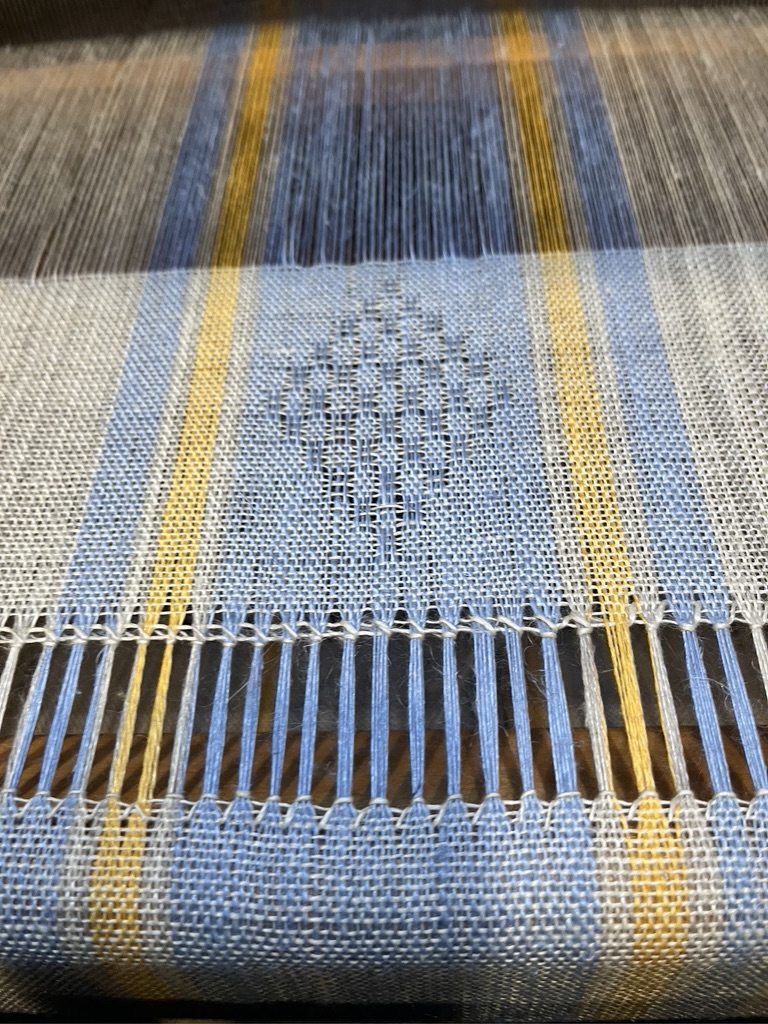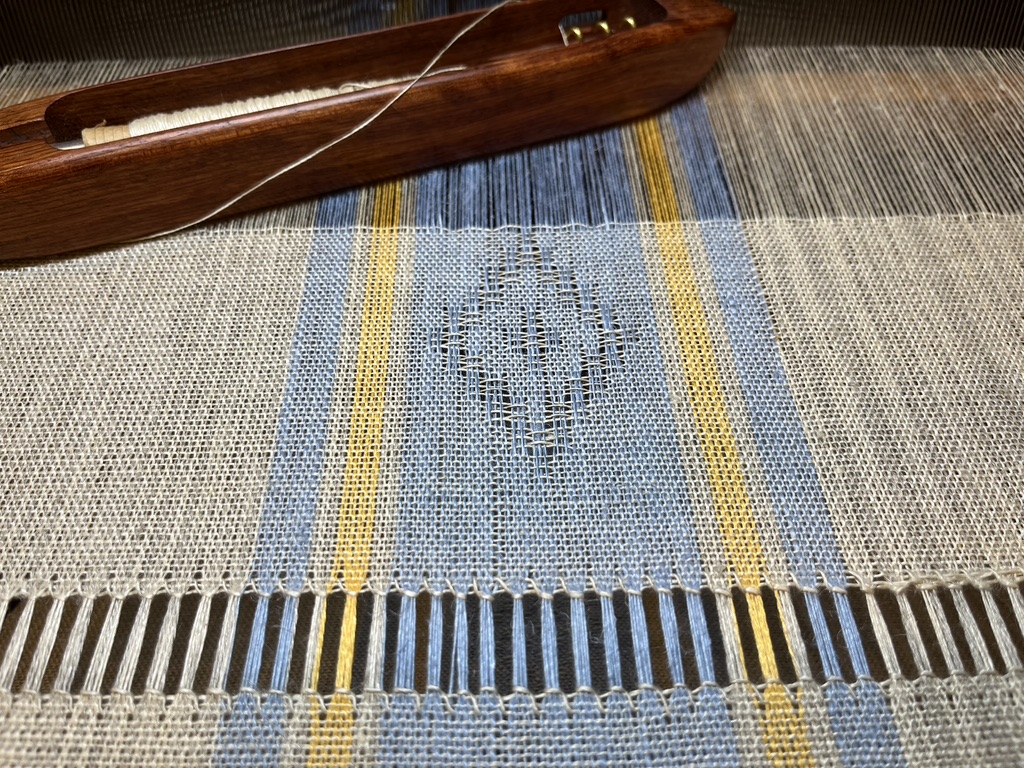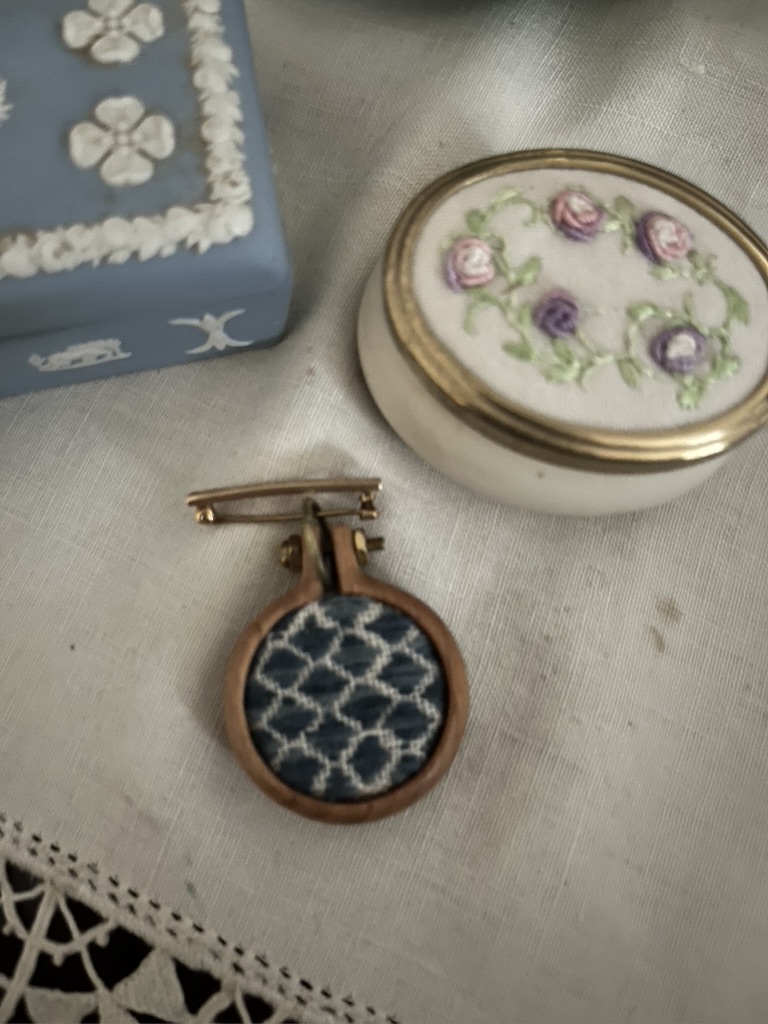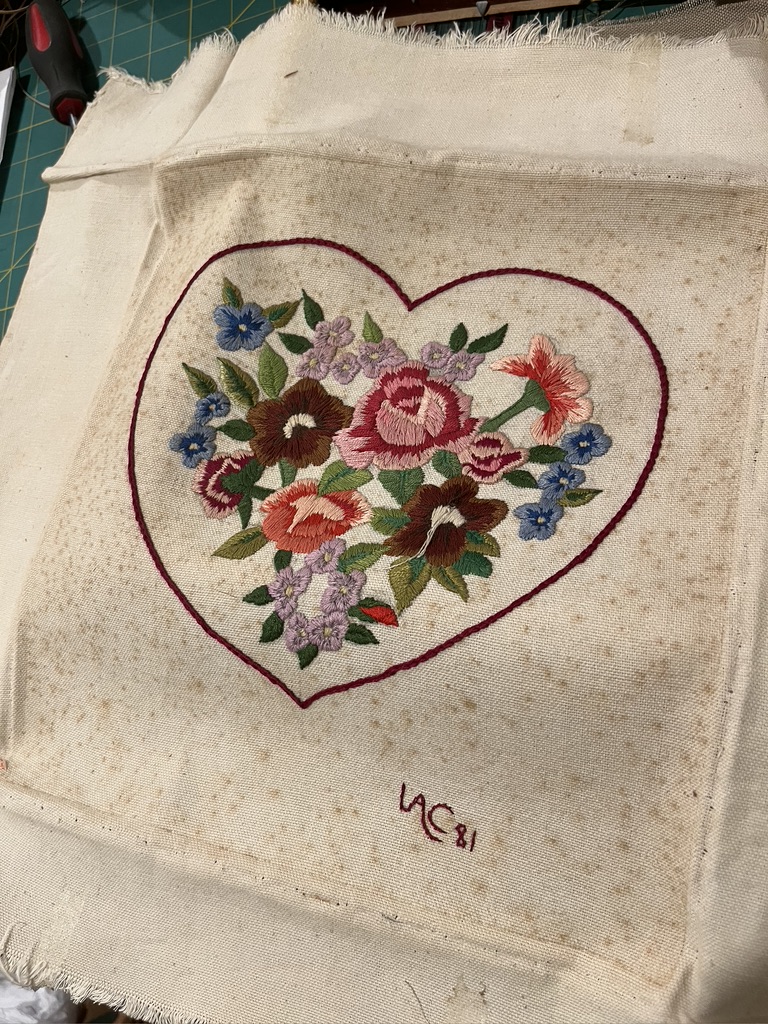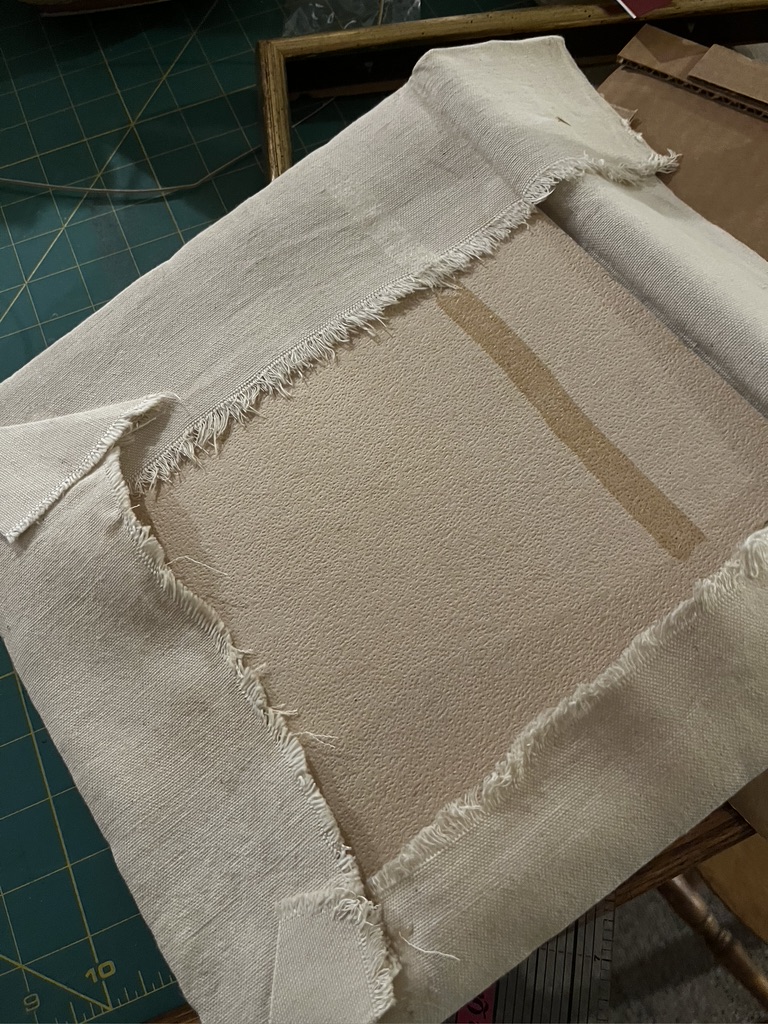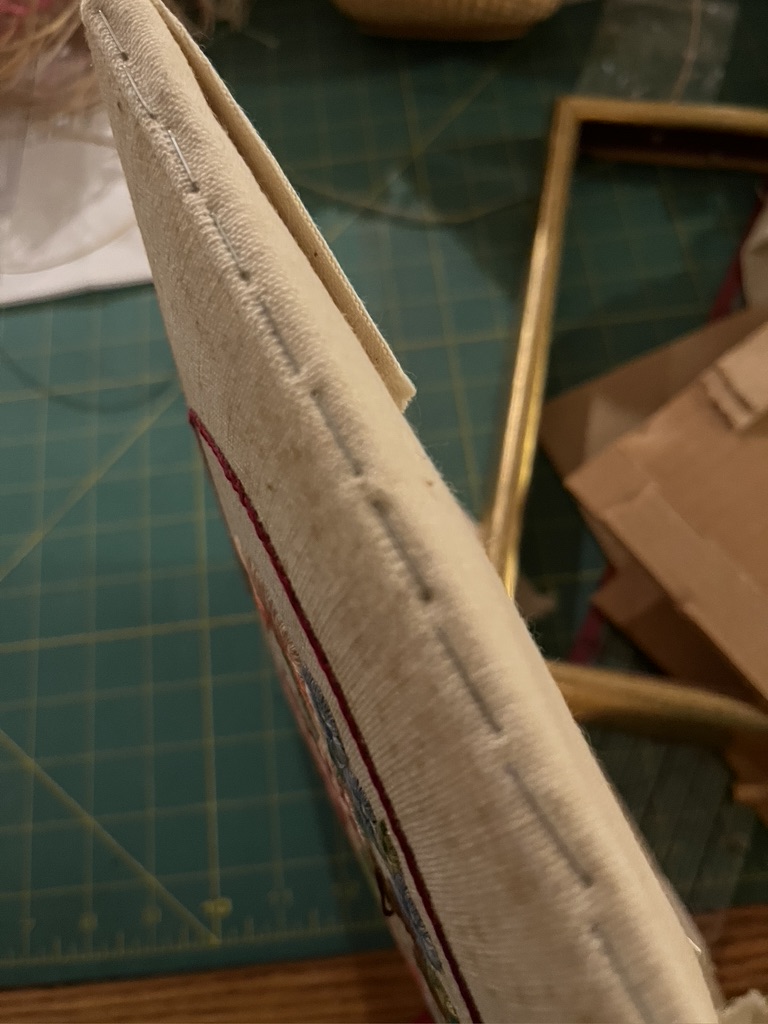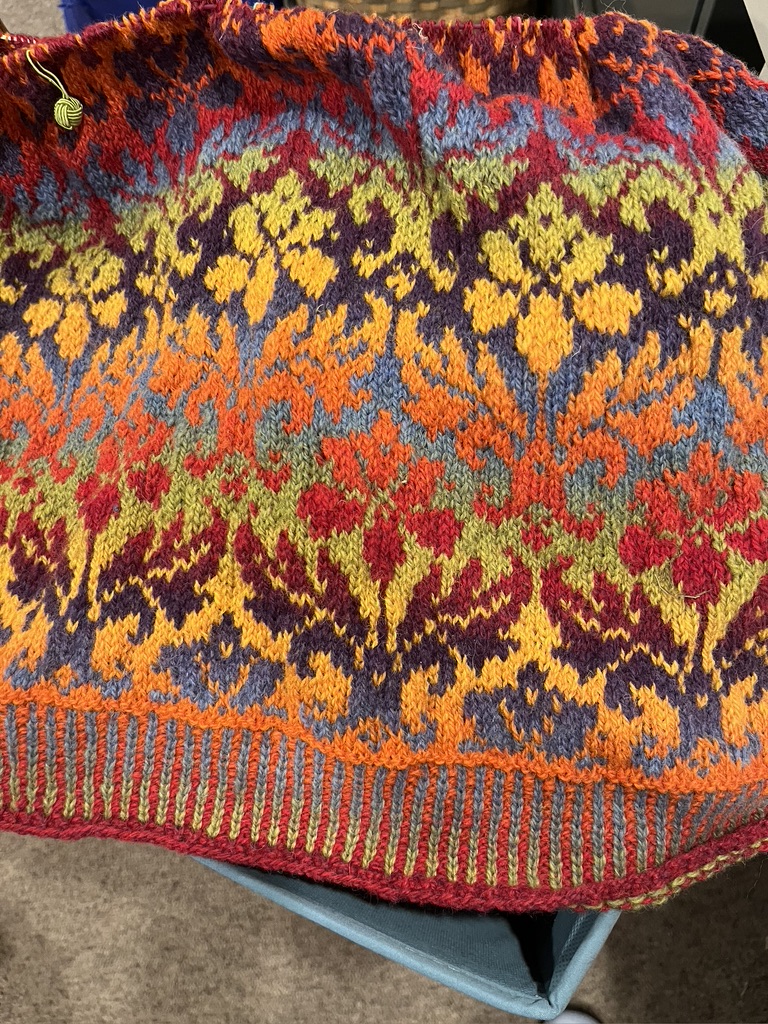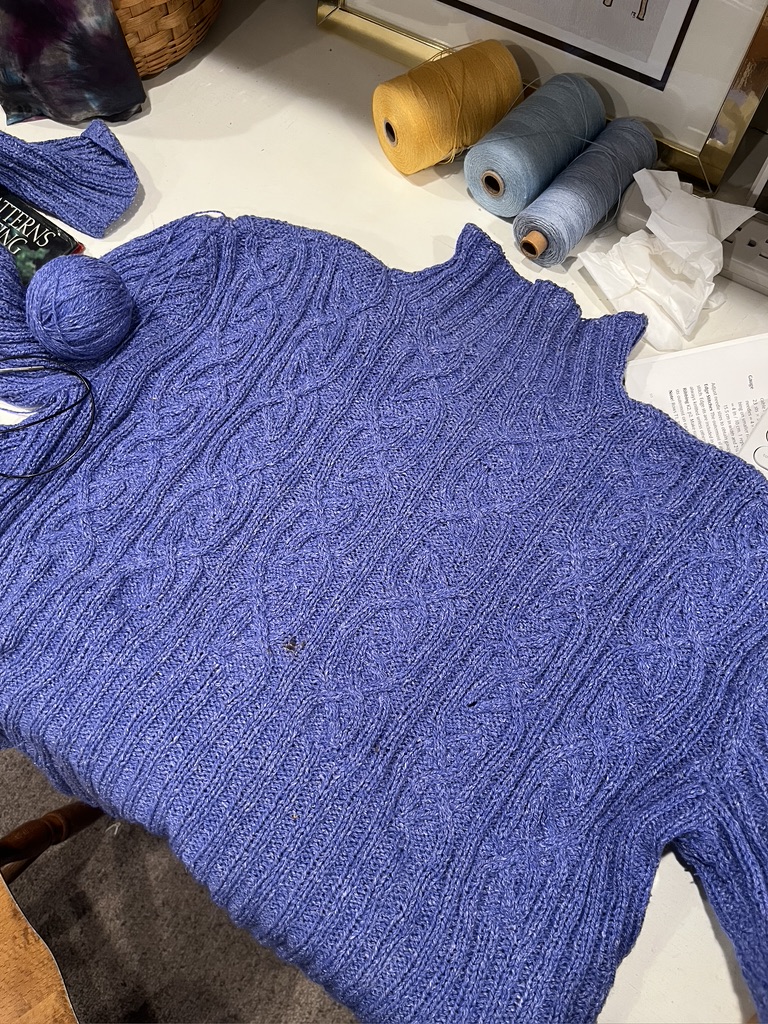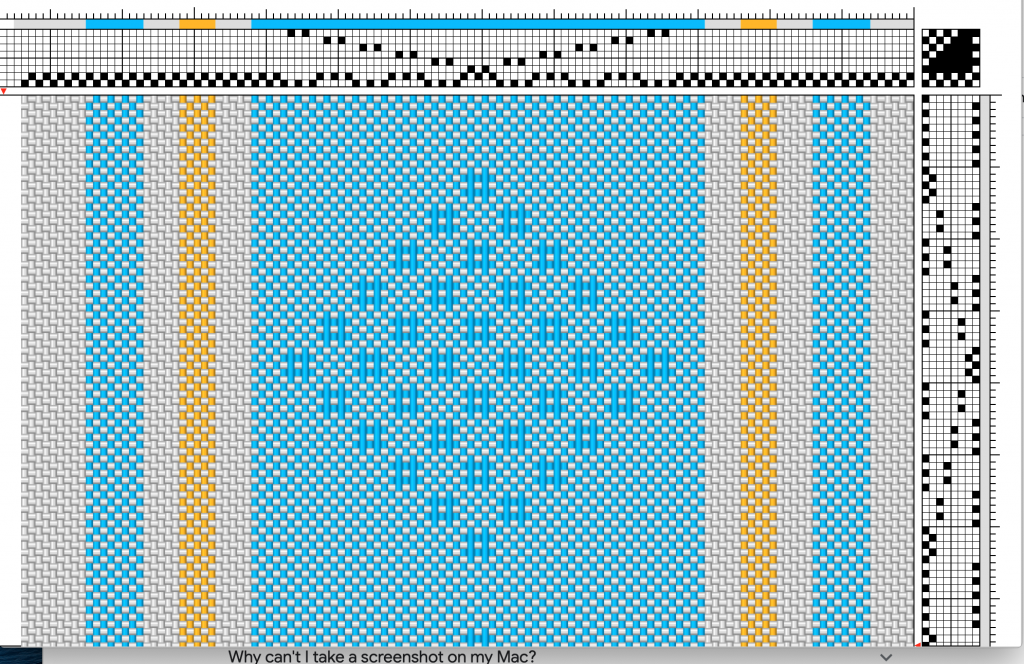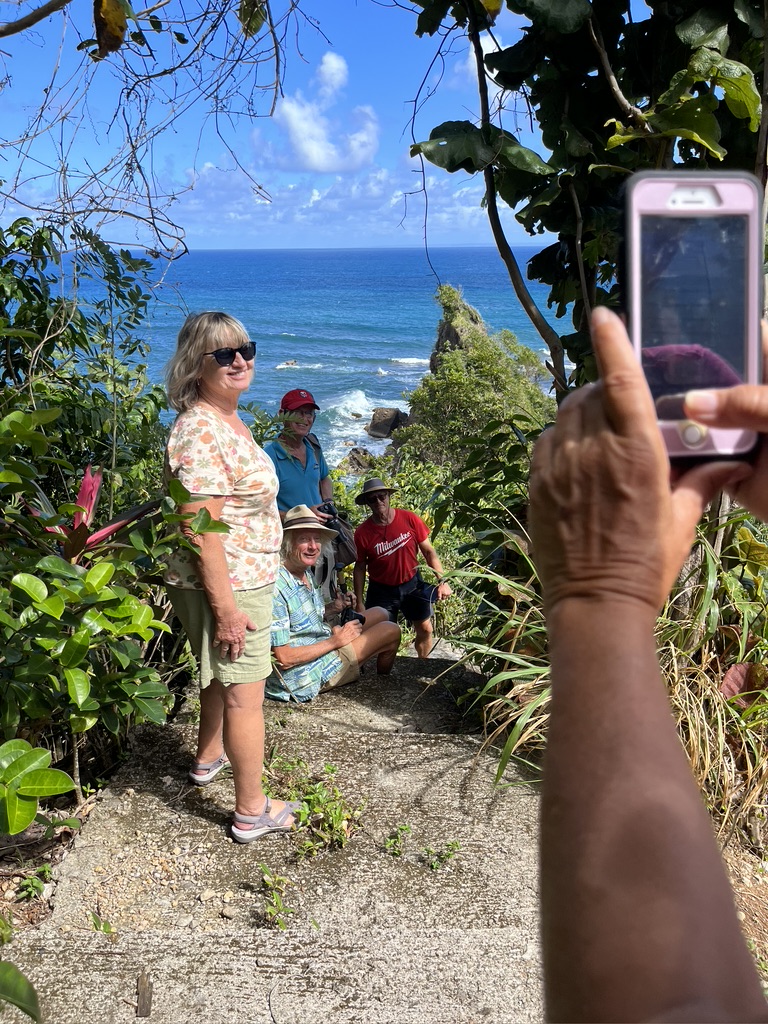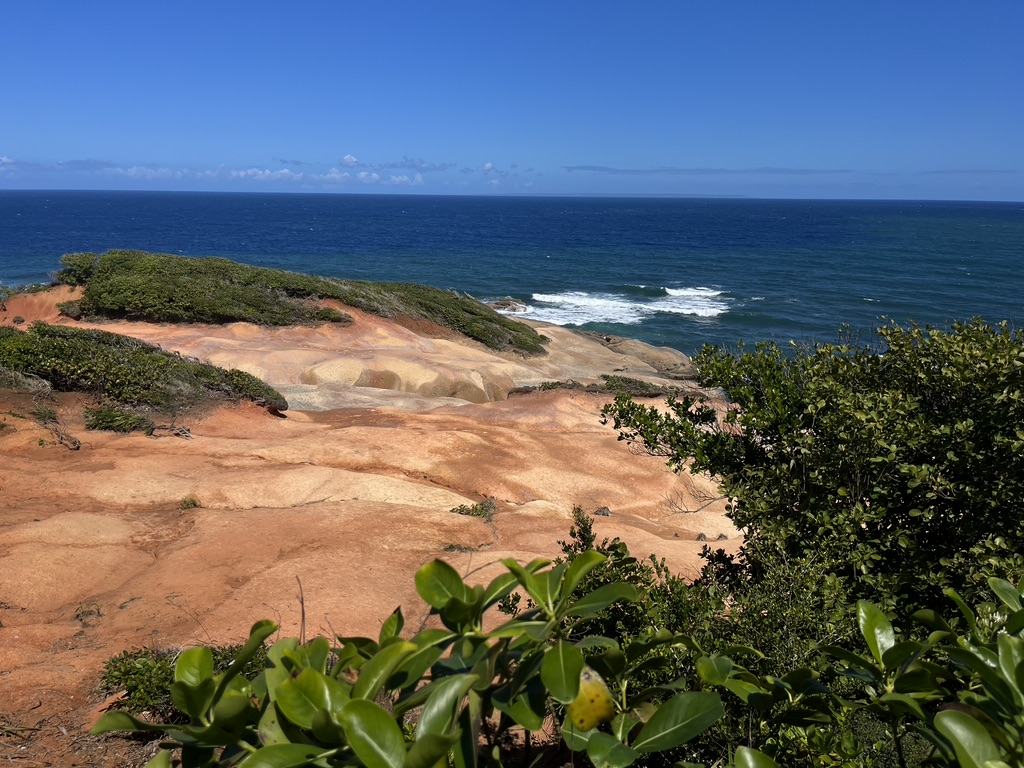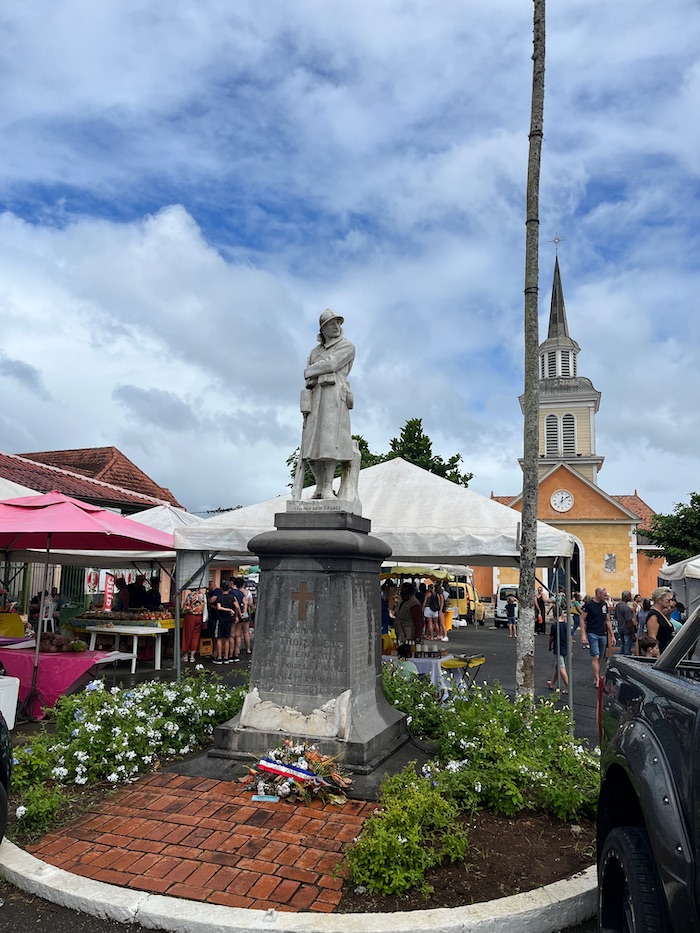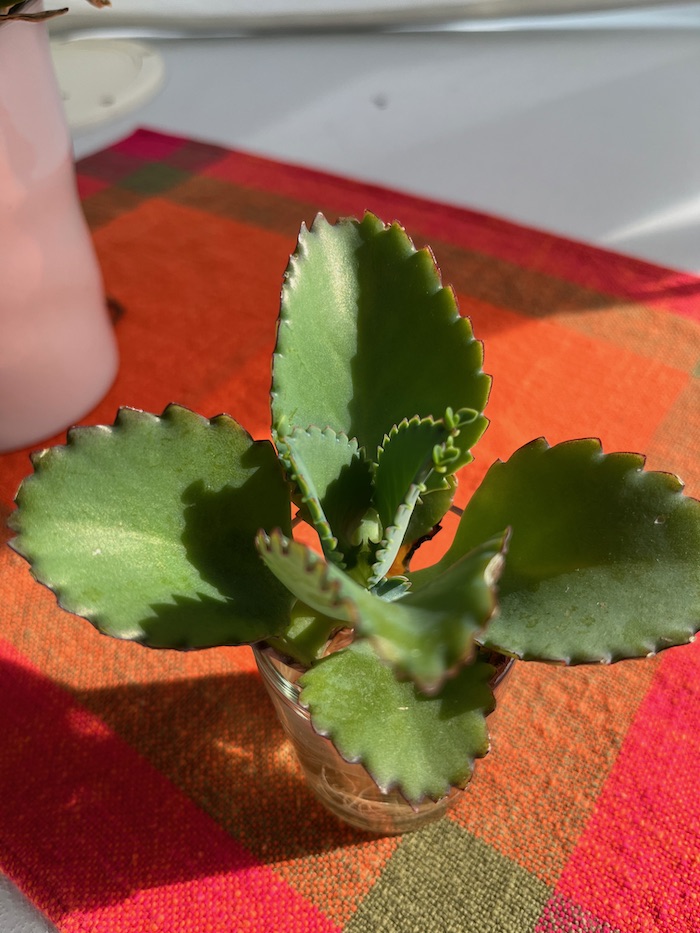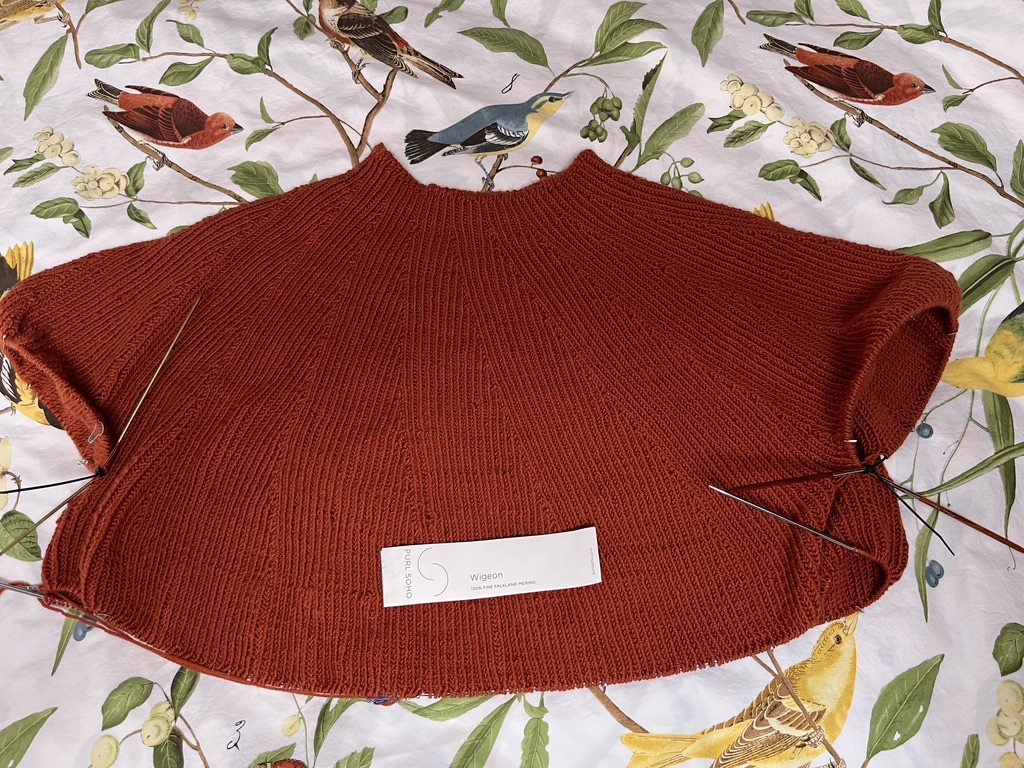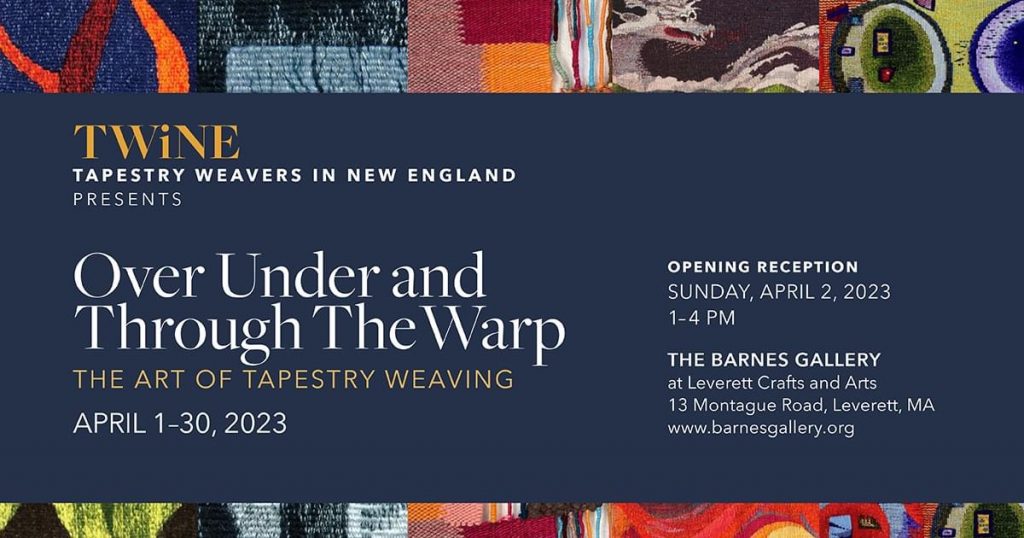Late last week we sailed to São Jorge. It was a short sail, only 20 nm, but I did not do well. It’s been a long time since I’ve sailed anywhere and clearly I’ve lost my ‘sea legs.’ In another day or two we will sail to São Miguel, and that will be 150 nm, and will take about 20 hours. I am not looking forward to that. What I’d like to do is take something that would keep me asleep for the entire trip. Wishful thinking.
In Horta there was a fabric/knitting/embroidery shop called Retrosaria where I bought some cotton yarn for a vest pattern I got from Bare Naked Wools. After making a small knitted sample I realized that pattern really needs the softness and slight halo of wool. Oh well. The shop was small and did not have any fabrics that tempted me, but oh! The yarns! I’ve now learned that the Portuguese yarn company, Rosarios, sources all their wool and processes it all in Portugal. The wools are from Portuguese merino sheep and a few other breeds, all raised in Portugal. The combing, spinning, and dyeing is also done in Portugal, using eco-friendly processes. I think I bought a color card for this yarn about a decade ago in a little yarn shop in Coimbra. I regretted not buying any yarn that day. Now I will rectify that mistake!
Here is a quote from the Rosarios website: We like to create value, which is why we look to nature as an example and inspiration, and we focus on natural or naturally-derived fibers as a path towards greater sustainability. We like to create yarns because we believe that knitting, crochet and embroidery makes people happier. And we have been doing what we love since 1979. You can read about their history here.
The wall of sewing and embroidery threads!
I wanted to buy wool to make a vest pattern by Bare Naked Wools called Black Oak Vest. Sadly, Retrosaria did not have enough of any of the wool colors I liked. I could have made it in black or in a medium mauve, but these are not colors that excite me-or look good on me. I bought a medium gray cotton. After making a test swatch of the lace pattern I decided that this pattern needs wool yarn. The cotton was the right gauge, but it didn’t look the way I wanted it to look. All in all, I was sad not to get some Portuguese wool.
There are numberous Rosarios shops throughout the Açores, and I passed one yesterday on our drive around São Jorge. It was a weaving shop that also sold yarn. They are only open Monday-Friday, and yesterday was Saturday. There were woven items on display as well as several looms with works in progress. The reflections on the glass kept me from getting any photos of the temptations inside. There are several Rosarios shops on the island of São Miguel, so I know I’ll have another chance to buy some Portuguese wool to make that vest!
As luck would have it, I did meet a weaver yesterday! Her family has a coffee plantation in Faja dos Nimes (faja, pronounced ‘fazhah, is Portuguese for a flattened area that was created by lava flow. São Jorge is known for these volcanic flattened areas), and they have a small coffee plantation where they get about 400 kilos per year. They roast the beans and serve coffee at their Cafe Nunes (pronounced Nooneesh. They take visitors to see their coffee plants, right behind their house in terraced gardens. It’s small but they have the distinction of having the only coffee plantation in the Açores, and possibly in Europe (this may be old information now).
When we arrived I feared the only way up to the cafe was through this garden, climbing two ladders! It was a bit daunting. But down the street a short way was a driveway up to the cafe. Whew! The cafe was on the ground floor, and the weaving studio “De Artesanato” was upstairs. To the left, mostly outside the photo, is the family home. The coffee is growing behind these buildings, on terraces.
The mother of the family, about my age, is the weaver. She has a weaving studio, separate from the house and from the cafe, where she has four looms and an interesting spinning wheel. I think her name is Maria. Have you ever seen a spinning wheel like this? I could not ask Maria about it because she spoke no English. Her adult daughter who helps with the plantation and serves people in the cafe, was busy, and I know her mother relies on her to translate. Here is the wheel.
It’s not a great photo, but hopefully you can see that it is a parlor wheel, yet has a spindle rather than a bobbin. I’m guessing that you sit at the wheel and spin doing long draw, then wind on from the point, like a charka or a great wheel. She works with cotton, so maybe she spins some of it? I managed to tell her that I also spin, but I could not navigate that I spin on a different type of wheel.
Maria mostly does a type of weaving called “weft loop.” Many of you who are my age will remember bedspreads made of this type of weaving. Maria makes those bedspreads, as well as runners, in this technique. Our friend Linda, who lives on this island has bought a number of Maria’s weft loop designs. Linda has a bedspread as well as this runner.

I bought a simpler woven runner as well as this blue and white placemat. I only bought one placemat to use as a center on our table on Pandora. I hope you can see the ‘turkey track’ design between the larger blue stripes. I love it!
The weft loop runner is quite long, with the loop design at both ends of the runner. I think I will turn it into a long bolster pillow for our bed at home, which has a machine woven coverlet made at the American Textile Museum when they were still in operation. I think the runner is as wide as our bed.
This is Maria’s largest loom that requires two weavers and has two sets of treadles. The center of this project is solid wool loops with the large borders woven in plain weave. The wool loops designs are all hand manipulated since this loom has only two shafts that are counter balance.
This is a photograph of an image of Maria and the 2nd weaver using the loom together. Slow work
for sure! What I found puzzling about all of Maria’s looms is how high the warp beam sits above the shafts and the reed. I think they have to push the beater back in order to throw the weft shuttle.
During the visit to the coffee growing area behind the house, Bob got this photo of Peter (as in the current Peter of Peter’s Sport Cafe in Horta-what a surprise to see him here and to have him recognize us) and me looking at the coffee plants. Maria, the weaver is on the left in this photo. It’s the only photo we have of her.
The rest of our day included a drive to the northern most point on the island where there is a lighthouse no longer in operation as well as a whale lookout, also no longer in operation. The way the lookout worked was that a spotter stood up there watching for whales, and when he saw one he would set off a firework that could be seen from the port. I’m not sure how he indicated the location of the whale. Maybe I’ll learn that before I write the next post. Too bad this photo does not show how long and steep the path to this lookout is, and how high it is.
The drive out to the whale lookout was a long, straight dirt road that passed through corn fields and cow pastures. There were fields where the hay had been harvested, and the many bales were stacked in the fields.
On our way back to the harbor in Zelas (pronounced Zehlash), we passed the Forest Reserve which we knew was not to be missed! I’ll just post a few images of that magical place.
Tree ferns, the oldest of plants, growing with hydrangea in this forest.
There was a small chapel in this forest.
….and oddly, a large stone laundry. I have no idea how old this laundry is.
At least there is a beautiful tile depiction of how this laundry was used.
To come back to knitting with the cotton yarn I had set aside, as luck would have it I saw a tempting pattern in an email from an Australian dyer. She offers patterns to go with her locally sourced Australian yarns that she dyes. This is also a vest pattern, or a simple top to be worn on its own, designed by Elenor Mortensen. It’s called “Eowyn Tee.”
Amazingly, the yarn specified is the same gauge as my Portuguese yarn, and the same color. This was too good to be true, so I immediately cast on and am now almost ready to put the sleeve stitches on a holder and continue with the body. The top down shaping is unique and was fun to do! And didn’t I find a cute yarn holder when I bought this yarn.
We leave for São Miguel today, where I will spend a week before heading to Scotland. I know there will be yarn purchases during my time in Scotland, but I’m glad I discovered ecologically produced Portuguese yarn while I was here. There is a Rosarios shop in São Miguel, so I am not yet finished looking at yarn in the Açores.























